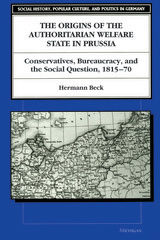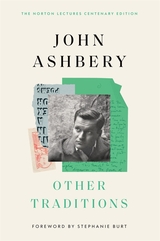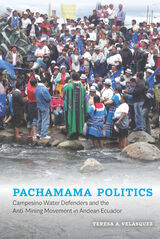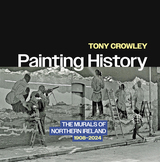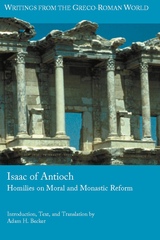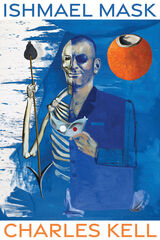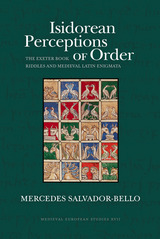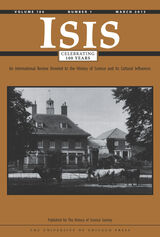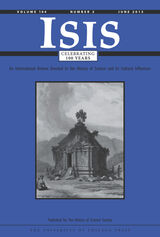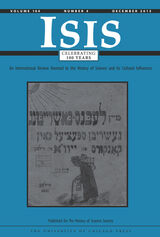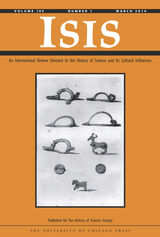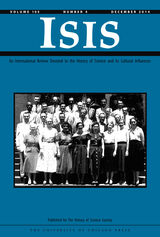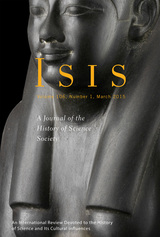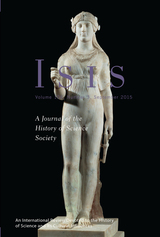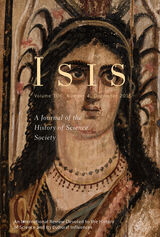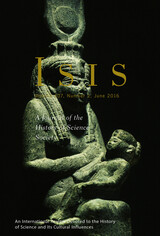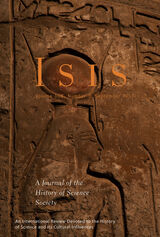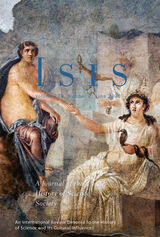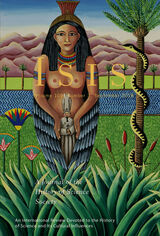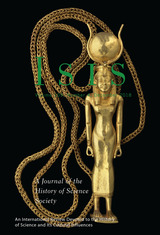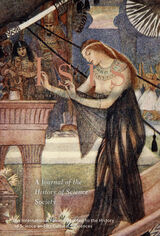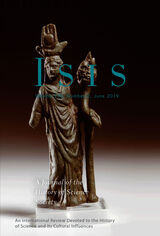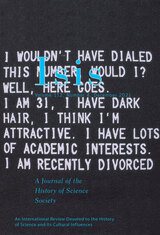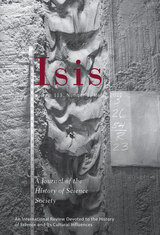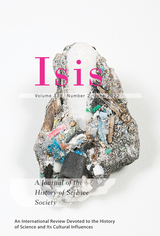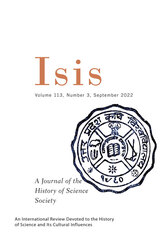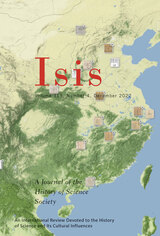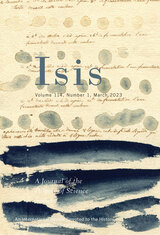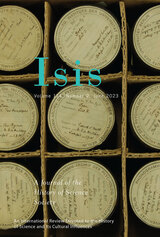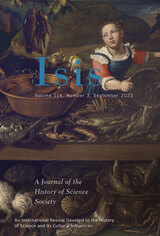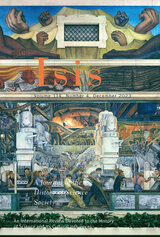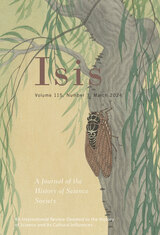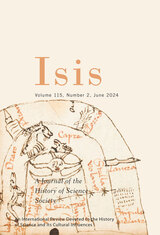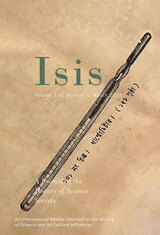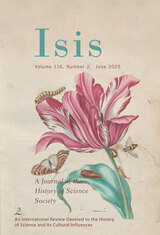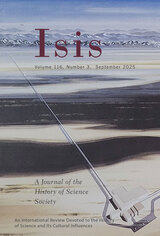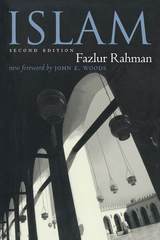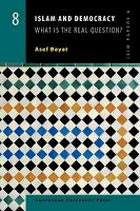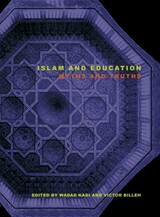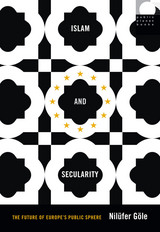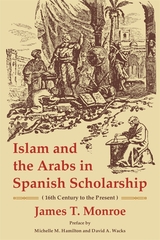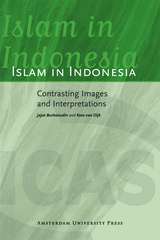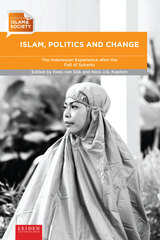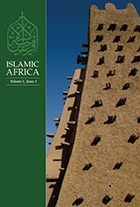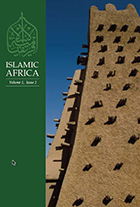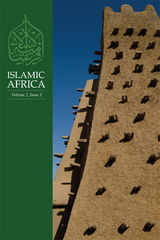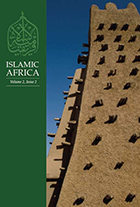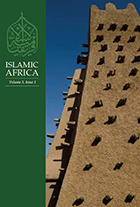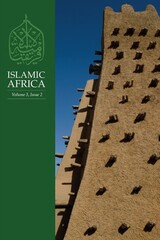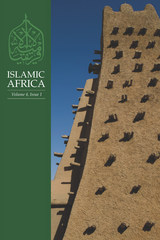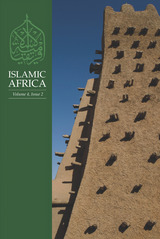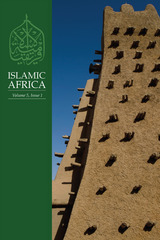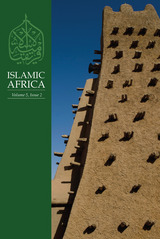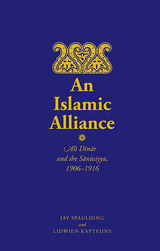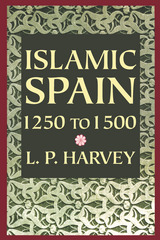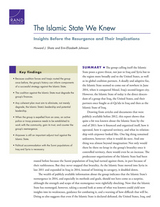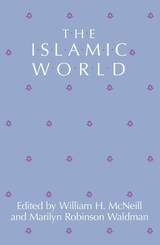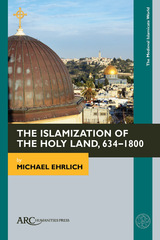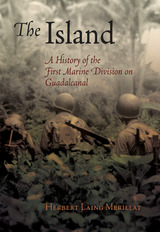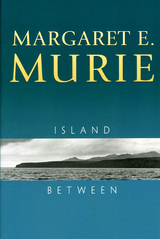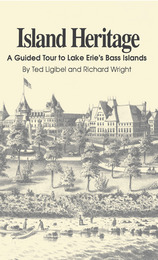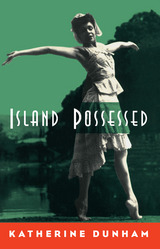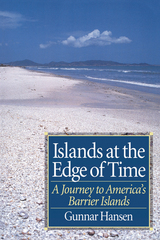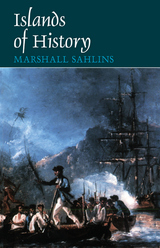 Isaac Newton’s Philosophiae Naturalis Principia Mathematica, Volumes 1 and 2: Facsimile of the Third Edition (1726) with Variant Readings
I. Bernard Cohen
Harvard University Press, 1972 This edition of Isaac Newton’s Principia is the first edition that enables the reader to see at a glance the stages of evolution of the work from the completion of the manuscript draft of the first edition in 1685 to the publication of the third edition, authorized by Newton, in 1726.
A photographic reprint of this final version, the present edition exhibits on the same page the variant readings from the seven other texts. This design allows the reader to see all the changes that Newton introduced and to determine exactly how the last and definitive edition, published a few months before Newton’s death, grew from earlier versions.
A series of appendices provides additional material on the development of the Principia; the contributions of Roger Cotes and of Henry Pemberton; drafts of Newton’s preface to the third edition; a bibliography of the Principia, describing in detail the three substantive editions and all the known subsequent editions; an index of names mentioned in the third edition; and a complete table of contents of the third edition.
Isaac of Antioch: Homilies on Moral and Monastic Reform
Adam H. Becker
SBL Press, 2024 This volume offers a critical edition and annotated translation of twenty metrical homilies attributed to Isaac of Antioch, a late fifth-century CE Syriac poet. The works in this collection, the majority of which are examples of the Syriac rebuke genre, are aimed at the moral reformation of the Syrian Christian community. The introduction, which provides the first detailed study of the manuscript tradition of the corpus as a whole, identifies four different Isaacs whose writings were intermingled already in late antiquity and develops criteria for distinguishing among their works. Scholars and students of church history will find this a valuable resource for the study of Syriac poetry and homiletics, Christian ideas of moral reform, and late antique monastic and lay devotional culture.
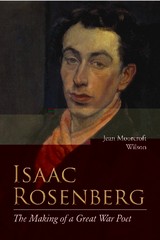 Isaac Rosenberg: The Making of a Great War Poet: A New Life
Jean Moorcroft Wilson
Northwestern University Press, 2009 Isaac Rosenberg was among the greatest poets of the First World War. The British-born son of impoversihed Russian Jews, Rosenberg fought as a private in the trenches of the Great Was and died on the Western Front in 1918 as the age of 27. In Isaac Rosenberg, Wilson examines the influence of Rosenberg's class and heritage on his writings, as well as the development of his poetic technique. She traces his maturation from his childhood in Bristol and the Jewish East End of London to art school, his travels to South Africa, and finally his harrowing service as a private in the British Army. Rosenberg was also a gifted painter and this beautifully illustrated volume oncludes some hitherto inseen self-portraits, along with photogrpahs of Rosenberg and his family. Wilson's biogrpahy brings together all known Rosenberg material with a mass of important new discoveries. Isaac Rosenberg is a long-overdue consideration of a remarkable war poet.
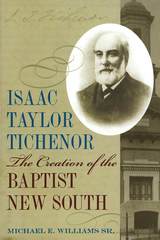 Isaac Taylor Tichenor: The Creation of the Baptist New South
Michael E. Williams Sr.
University of Alabama Press, 2005 The influential role Tichenor played in shaping both the Baptist denomination and southern culture
Isaac Taylor Tichenor worked as a Confederate chaplain, a mining executive, and as president of the Agricultural and Mechanical College of Alabama (now Auburn University). He also served as corresponding secretary for the Home Mission Board of the Southern Baptist Convention in Atlanta from 1882 until 1899. In these capacities Tichenor developed the New South ideas that were incorporated into every aspect of his work and ultimately influenced many areas of southern life, including business, education, religion, and culture.
In Isaac Taylor Tichenor: The Creation of the Baptist New South, Michael E. Williams Sr. provides a comprehensive analysis of Tichenor’s life, examining the overall impact of his life and work. This volume also documents the methodologies Tichenor used to rally Southern Baptist support around its struggling Home Mission Board, which defined the makeup of the Southern Baptist Convention and defended the territory of the convention.
Tichenor was highly influential in forming a uniquely southern mindset prior to and at the turn of the century. Williams contends that Tichenor’s role in shaping Southern Baptists as they became the largest denomination in the South was crucial in determining their identity both the identities of the region and the SBC.
 Isabel Rules: Constructing Queenship, Wielding Power
Barbara F. Weissberger
University of Minnesota Press, 2003 A deconstruction of the strategies used to shape the image of a powerful woman ruler As queen of Spain, Isabel I of Castile (known to history as Isabella the Catholic, 1474–1504) oversaw the creation of Europe’s first nation-state and laid the foundations for its emergence as the largest empire the West has ever known—nearly a century before the better-known and more widely studied Elizabeth I of England. What we know of this remarkable ruler is typically gleaned from hagiographic texts that negate her power and accept her own propagandistic self-fashioning as legitimate heir, pious princess, devoted wife, and heaven-sent healer of the wounds inflicted on Spain’s body politic by impotent kings, seditious nobles, and such undesirable others as Jews, Muslims, and sodomites. Isabel Rules is the first book to examine the formation of the queen’s public image, focusing on strategies designed to cope with the ideological and cultural dissonance created by the combination of her gender and her profoundly patriarchal political program for unifying and purifying Spain.Barbara Weissberger identifies two primary and interrelated strategies among the supporters of the queen—often writing in her employ—and her critics. Her loyalists use Marian imagery to portray Isabel as a pious, chaste, and submissive queen consort to her husband Ferdinand, while her opponents imagine the queen as a voracious and lascivious whore whose illicit power threatens the virility of her male subjects and inverts the traditional gender hierarchy. Weissberger applies a materialist feminist perspective to a wide array of texts of the second half of the fifteenth century in order to uncover and study the masculine psychosexual anxiety created by Isabel’s anomalous power. She then demonstrates the persistence of the two sides of the propagandistic construction of the Catholic queen, reviewing modern treatments in Francoist schoolbooks and in the fiction of Juan Goytisolo, Alejo Carpentier, and Salman Rushdie.
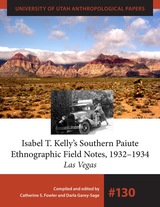 Isabel T. Kelly's Southern Paiute Ethnographic Field Notes, 1932-1934
Compiled and Edited by Catherine S. Fowler and Darla Garey-Sage
University of Utah Press, 2016 University of Utah Anthropological Paper No. 130
This publication presents the first volume (Las Vegas) of the early ethnographic field work of anthropologist Isabel T. Kelly. From 1932 to 1934, Kelly interviewed thirty Southern Paiute people from southeastern California, southern Nevada, and southern Utah about “the old ways.” During this time, she filled thirty-one notebooks, made several maps, took roughly fifty photographs, collected nearly 300 ethnobotanical specimens, purchased and shipped over 400 ethnographic artifacts to museums, and traveled more than 7,000 miles. Her notes comprise the most extensive primary ethnographic documentation of Southern Paiute/Chemehuevi lifeways of the middle to late nineteenth and early twentieth centuries existing today. Although Kelly intended to publish these notes, she was unable to before her death. Fowler and Garey-Sage have now synthesized the first set of these handwritten field notes and sketches, providing commentary and illustrations to put them in context for the modern reader. Kelly’s data, most of which could not be gathered anew today, are offered here for the use of generations to come.
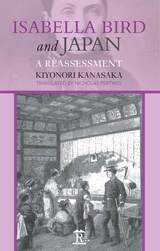 Isabella Bird and Japan: A Reassessment
Kiyonori Kanasaka
Amsterdam University Press, 2017 his book places Bird's visit to Japan in the context of her worldwide life of travel and gives an introduction to the woman herself. Supported by detailed maps, it also offers a highly illuminating view of Japan and its people in the early years of the 'New Japan' following the Meiji Restoration of 1868, as well as providing a valuable new critique on what is often considered as Bird's most important work. The central focus of the book is a detailed exploration of Bird's journeys and the careful planning that went into them with the support of the British Minister, Sir Harry Parkes, seen as the prime mover, who facilitated her extensive travels through his negotiations with the Japanese authorities. Furthermore, the author dismisses the widely-held notion that Bird ventured into the field on her own, revealing instead the crucial part played by Ito, her young servant-interpreter, without whose constant presence she would have achieved nothing. Written by Japan's leading scholar on Isabella Bird, the book also addresses the vexed question of the hitherto universally-held view that her travels in Japan in 1878 only involved the northern part of Honshu and Hokkaido. This mistaken impression, the author argues, derives from the fact that the abridged editions of Unbeaten Tracks in Japan that appeared after the 1880 two-volume original work entirely omit her visit to the Kansai, which took in Osaka, Kyoto, Kobe and the Ise Shrines. Bird herself tells us that she wrote her book in the form of letters to her sister Henrietta but here the author proposes the intriguing theory that these letters were never actually sent. Many well-known figures, Japanese and foreign, are introduced as having influenced Bird's journey indirectly, and this forms a fascinating sub-text.
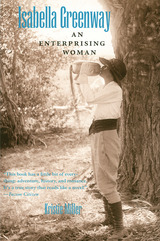 Isabella Greenway: An Enterprising Woman
Kristie Miller
University of Arizona Press, 2004 She was at home on the western range and in New York salons. An energetic entrepreneur who managed a ranch, an airline, and a resort. A politician who became a key player in the New Deal. Isabella Greenway blazed a trail for remarkable women in Arizona politics today, from Janet Napolitano to Sandra Day O'Connor. Now Kristie Miller offers an intimate view of this extraordinary woman.
Isabella Greenway's life was linked with both Theodore Roosevelt and Franklin D. Roosevelt. Her infancy was spent on a snow-swept ranch in North Dakota, where young TR was a neighbor and a friend. In her teens, she captivated Edith Wharton's New York as a glamorous debutante. A bridesmaid in the wedding of Eleanor and Franklin Roosevelt, Isabella was the bride of Robert Ferguson, a Scottish nobleman and one of TR's Rough Riders. They went west when he developed tuberculosis; after his death, she married his fellow Rough Rider, Arizona copper magnate John Greenway.
In Tucson, the energetic Isabella ran an airline, worked with disabled veterans, and founded the world-famous Arizona Inn. When the Great Depression brought hard times, Eleanor Roosevelt recruited Isabella to work for the Democratic Party. Isabella played a decisive role in Franklin Roosevelt's nomination to the presidency in 1932; the New York Times called her "the most-talked-of woman at the National Democratic Convention." She was elected to Congress as Arizona's only US Representative, and again drew national media attention when she challenged FDR for not being sufficiently progressive.
Miller's meticulous biography captures a life of adventure and romance, from southern tobacco country to the ballrooms of New York, from western ranches to the dome of the US Capitol. She shows national politics played out behind the scenes, Isabella's lifelong friendship with Eleanor Roosevelt, and the drama of a loyal wife caring for a dying husband despite having fallen in love with a younger man. The book also shows Greenway's considerable influence on the development of Arizona's business and politics in the early decades of statehood. Although Isabella Greenway died in 1953, the Arizona Inn—a tribute to her enterprise—remains a premier resort hotel, celebrating its 75th anniversary in 2005. This book, too, celebrates Isabella's energy, vision, indomitable spirit, and love of life.
 Isabelle Day Refuses to Die of a Broken Heart
Jane St. Anthony
University of Minnesota Press, 2018 In Milwaukee, Isabelle Day had a house. And she had a father. This year, on Halloween, she has half of a house in Minneapolis, a mother at least as sad as she is, and a loss that’s too hard to think—let alone talk—about. It’s the Midwest in the early 1960s, and dads just don’t die . . . like that. Hovering over Isabelle’s new world are the duplex’s too-attentive landladies, Miss Flora (“a lovely dried flower”) and her sister Miss Dora (“grim as roadkill”), who dwell in a sea of memories and doilies; the gleefully demonic Sister Mary Mercy, who rules a school awash in cigarette smoke; and classmates steady Margaret and edgy Grace, who hold out some hope of friendship. As Isabelle’s first tentative steps carry her through unfamiliar territory—classroom debacles and misadventures at home and beyond, time trapped in a storm-tossed cemetery and investigating an inhospitable hospital—she begins to discover that, when it comes to pain and loss, she might actually be in good company. In light of the elderly sisters’ lives, Grace and Margaret’s friendship, and her father’s memory, she just might find the heart and humor to save herself. With characteristic sensitivity and wit, Jane St. Anthony reveals how a girl’s life clouded with grief can also hold a world of promise.
 Isadore's Secret: Sin, Murder, and Confession in a Northern Michigan Town
Mardi Link
University of Michigan Press, 2010 "In Isadore's Secret, Mardi Link shines a journalist's lamp on this dark, quiet corner of Michigan's history, assuring that the tragic story of Sister Janina is not forgotten. Link's telling is fascinating and thorough, making a story you will not soon forget."
---Steve Lehto, author of Death's Door A gripping account of the mysterious 1907 disappearance of a young nun in a northern Michigan town and the national controversy that followed when she turned up dead and buried in the basement of her own church. Swinging planks of lantern light shine through the musty air and onto the dirt floor of the church basement. The oddly glowing rectangles syncopate over the damp ground and illuminate even the darkest, stooped-down corners of the space beyond. The only sound is the ragged breathing of two men, a young parish priest and a much older laborer. Aboveground these men belong completely to this place, in both body and soul. A glimpse of their faces anywhere in the sanctuary, the rectory, the school, the barn, or the gardens would be a welcome sight. But here below, these men of Isadore are interlopers. Only trespassers would sneak silently into the church's sloped underbelly without witness to carry out such a sinful and secret errand as this one. Despite their tools, and their lantern, and their resolve, neither is equipped for the task at hand or for what is to come. Mardi Link, a former crime reporter, was named Antioch's Betty Crumrine Scholar for Creative Nonfiction in 2007. Her first book, When Evil Came to Good Hart, also published by the University of Michigan Press, spent four months on the Heartland Indie Bestseller List. This true story was the basis for the Broadway play The Runner Stumbles and the film of the same name. Front cover: Photograph of cemetery © John L. Russell, Great Lakes Images; image of face ©iStockphoto.com/duncan1890.
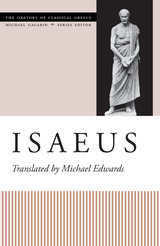 Isaeus
Translated with an introduction by Michael Edwards
University of Texas Press, 2007 This is the eleventh volume in the Oratory of Classical Greece. This series presents all of the surviving speeches from the late fifth and fourth centuries BC in new translations prepared by classical scholars who are at the forefront of the discipline. These translations are especially designed for the needs and interests of today's undergraduates, Greekless scholars in other disciplines, and the general public. Classical oratory is an invaluable resource for the study of ancient Greek life and culture. The speeches offer evidence on Greek moral views, social and economic conditions, political and social ideology, law and legal procedure, and other aspects of Athenian culture that have recently been attracting particular interest: women and family life, slavery, and religion, to name just a few. The orator Isaeus lived during the fourth century BC and was said to be the teacher of Demosthenes, Athens' most famous orator. Of the fifty or more speeches he is believed to have written, eleven survive in whole, one as a large fragment, and others as smaller fragments. This volume presents all the surviving works of Isaeus. The speeches mainly deal with inheritances and are a vital source of information regarding Greek law in this important area. In addition to translating the speeches, Michael Edwards provides a general introduction to Isaeus and Athenian inheritance law, as well as specific introductions and notes for each speech.
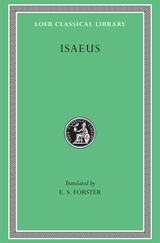 Isaeus
Isaeus
Harvard University Press The foreigner whose style shaped Athens’ greatest orator.
Though he occupies a firm place in the canon of the ten Attic orators, Isaeus seems not to have been an Athenian, but a metic, being a native of Chalcis in Euboea. From passages in his work he is inferred to have lived from about 420 to 350 BC. But no contemporary mentions him, and it is from Dionysius of Halicarnassus that we learn he was the teacher of Demosthenes, a fact confirmed by several unmistakable examples of borrowing from or imitation of him by his great pupil.
Isaeus took no part in politics, but composed speeches for others, particularly in cases of inheritance. While he shares with Lysias the merits of a pure Attic and a lucidity of style, Isaeus is more aggressive and more flexible in his presentation; and in these respects he undoubtedly influenced Demosthenes. We learn of the existence in ancient times of at least fifty orations, but all that has come down to us are eleven speeches on legacy cases and a large fragment of a speech dealing with a claim of citizenship.
 Isaiah Berlin: A Celebration
Edited by Edna Ullmann-Margalit and Avishai Margalit
University of Chicago Press, 1991 Isaiah Berlin: A Celebration gathers tributes, reflections, and commentaries on the great thinker and his philosophy, politics, and life-including contributions from Michael Ignatieff, Leon Wieseltier, Ronald Dworkin, Stephen Spender, and many others.
"Some [essays], like Joseph Brodsky's tribute, are touchingly personal. Others, like G. A. Cohen's 'Isaiah's Marx, and Mine,' mingle personal reminiscences with a more theoretical look at Berlin's ideas. . . . The volume is a fitting tribute to a thinker famed for his erudition, eclecticism, and clarity of style."—Merle Rubin, The Christian Science Monitor
"One of the many merits of this rich and rewarding collection is the sense-very imperfectly conveyed here-it transmits of the tone of Berlin's writings and conversation, of the multiplicity of his interests and the variety of his achievements. . . . The essays testify to the character of Berlin's mind as a luminous prism, in which the cultural traditions of Russia, England and Judaism are marvelously refracted."—John Gray, Times Literary Supplement
"[T]he collection testifies to the learning and profundity of Berlin's thought and, by way both of reminiscence and influence, to the charm and gaity of its expression."—Anthony Quinton, The Times of London
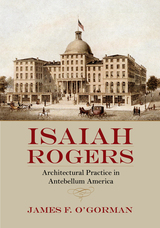 Isaiah Rogers: Architectural Practice in Antebellum America
James F. O'Gorman
University of Massachusetts Press, 2015 When Isaiah Rogers died in 1869, the Cincinnati Daily Times noted that "in his profession he was, perhaps, better known than any other person in the country." Yet until now there has been no study that fully examines his remarkable, influential, and instructive career. Based largely on Rogers's own diary, this book tells his story and adds much to our understanding of architectural practice in the United States before the Civil War.
In 1944 the distinguished historian Talbot Hamlin wrote of New York's Merchant Exchange (1836–42) that the building had "been so grandly conceived, so simply and directly planned, and so beautifully detailed . . . [that] the whole was welded inextricably into one powerful organic conception that shows Rogers as a great architect in the fullest sense of the word." Rogers's Tremont House in Boston has been called the world's first modern hotel; it spawned many progeny, from his first Astor House in New York to his Burnet House in Cincinnati and beyond.
Rogers designed buildings from Maine to Georgia and from Boston to Chicago to New Orleans, supervising their construction while traveling widely to procure materials and workmen for the job. He finished his career as Architect of the Treasury Department during the Civil War. In this richly illustrated volume, James F. O'Gorman offers a deft portrait of an energetic practitioner at a key time in architectural history, the period before the founding of the American Institute of Architects in 1857.
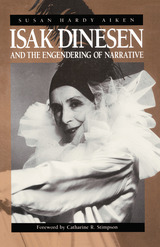 Isak Dinesen and the Engendering of Narrative
Susan Hardy Aiken
University of Chicago Press, 1990 Although Isak Dinesen has been widely acclaimed as a popular writer, her work has received little sustained critical attention. In this revisionist study, Susan Hardy Aiken takes up the complex relations of gender, sexuality, and representation in Dinesen's narratives. Drawing on feminist, psychoanalytic, and post-structuralist theories, Aiken shows how the form and meaning of Dinesen's texts are affected by her doubled situations as a Dane who wrote in English, a European who lived for many years in Africa, and a woman who wrote under a male pseudonym within a male-centered literary tradition.
In a series of readings that range across Dinesen's career, Aiken demonstrates that Dinesen persistently asserted the inseparability of gender and the engendering of narrative. She argues that Dinesen's texts anticipate in remarkable ways some of the most radical insights of contemporary literary theories, particularly those of French feminist criticism. Aiken also offers a major rereading of Out of Africa that both addresses its distinctiveness as a colonialist text and places it within Dinesen's larger oeuvre.
In Aiken's account, Dinesen's work emerges as a compelling inquiry into sexual difference and the ways it informs culture, subjectivity, and the language that is their medium. This important book will at last give Isak Dinesen's work the prominence it deserves in literary studies.
 Isak Dinesen: The Life And Imagination Of A Seducer
Olga Anastasia Pelensky
Ohio University Press, 1991 Born into a Victorian Danish family, Karen Christentze Dinesen married her second cousin, a high-spirited and philandering baron, and moved to Kenya where she ran a coffee plantation, painted, and wrote. She later returned to Denmark, lived through the German occupation during World War II, and became a pivotal figure in Heretica, a major literary movement that flourished in Denmark after the war. By the time of her death, Dinesen was an international figure. Truman Capote would later call Out of Africa one of the most beautiful books of the century. Despite the popularity of her writing, little is known about her life. For this provocative biography, Pelensky has uncovered hundreds of papers in libraries and private collections, and discovered new interview sources in Africa, Denmark, and England to help put the pieces of Dinesen’s life together. Her father’s outspoken sympathy for the plight of the American Indians, his suicide and the effects of his personal anguish as a failed adventurer are illuminated as major forces on Dinesen’s imagination. The Danish history of romance and masquerade and the tradition of pantomime in Denmark are also explored as themes that recur in Dinesen’s work.
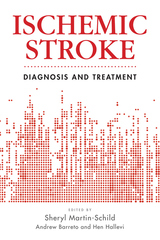 Ischemic Stroke: Diagnosis and Treatment
Martin-Schild, Sheryl
Rutgers University Press, 2018 Stroke is the fifth leading cause of death in the United States and is a leading cause of adult disability and discharge from hospitals to chronic care facilities. Despite the frequency and morbidity of stroke, there is a relative paucity of “stroke experts,” such as vascular neurologists and neurocritical care physicians, to care for these patients. Clinical research in the diagnosis and treatment of stroke has grown exponentially over the past two decades resulting in a great deal of new clinical information for attending physicians to absorb. Grounded in cutting-edge and evidence-based strategies, Ischemic Stroke closes the gap in stroke care by providing a cogent and intuitive guide for all physicians caring for stroke patients.
Key topics explored cover all elements of stroke care, including examinations of: emergent evaluation of the suspected stroke patient, clinical signs and symptoms of stroke, mechanisms of ischemic stroke, neuroimaging, cardiac-based evaluation, thrombolytic therapy, endovascular therapy, critical care management, rehabilitation, cardiac arrhythmias, and structural heart disease.
ISDN Applications in Education and Training
Robin Mason
The Institution of Engineering and Technology, 1994 ISDN presents a new challenge for educators and trainers. This book provides an introduction to the technology for educators interested firstly in whether to use it and secondly in how to use it. The first three chapters discuss practical, educational and strategic issues related to these two questions. The following ten chapters provide case studies of education and training uses of ISDN technologies in Europe, the US and Australia. These involve videoconferencing, audiographics, desktop conferencing and image banks. The book concludes with a large glossary of explanatory material.
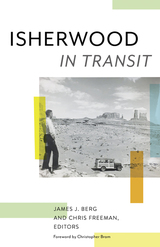 Isherwood in Transit
James J. Berg
University of Minnesota Press, 2020 New perspectives on Christopher Isherwood as a searching and transnational writer
“Perhaps I had traveled too much, left my heart in too many places,” muses the narrator of Christopher Isherwood’s novel Prater Violet (1945), which he wrote in his adopted home of Los Angeles after years of dislocation and desperation. In Isherwood in Transit, James J.Berg and Chris Freeman bring together diverse Isherwood scholars to understand the challenges this writer faced as a consequence of his travel. Based on a conference at the Huntington Library, where Isherwood’s recently opened papers are held, Isherwood in Transit considers the writer not as an English, continental, or American writer but as a transnational one, whose identity, politics, and beliefs were constantly transformed by global connections and engagements arising from journeys to Germany, Japan, China, and Argentina; his migration to the United States; and his conversion to Vedanta Hinduism in the 1940s. Approaching Isherwood’s rootlessness and restlessness from various perspectives, these essays show that long after he made a new home in California and became an American citizen, Christopher Isherwood remained unsettled, although his wanderings became spiritual and personal rather than geographic. Contributors: Barrie Jean Borich, DePaul U; Jamie Carr, Niagara U; Robert L. Caserio, Penn State U, University Park; Lisa Colletta, American U of Rome; Lois Cucullu, U of Minnesota; Jaime Harker, U of Mississippi; Carola M. Kaplan, California State U, Pomona; Calvin W. Keogh, Central European U, Budapest; Victor Marsh; Wendy Moffat, Dickinson College; Xenobe Purvis; Bidhan Roy, California State U, Los Angeles; Katharine Stevenson, U of Texas at Austin; Edmund White.
Isherwood on Writing: The Complete Lectures in California
Christopher Isherwood
University of Minnesota Press, 2022 Isherwood’s lectures on writing and writers, now all available for the first time
In the 1960s, Christopher Isherwood gave an unprecedented series of lectures at California universities about his life and work. During this time Isherwood, who would liberate the memoir and become the founding father of modern gay writing, spoke openly for the first time about his craft—on writing for film, theater, and novels—and spirituality. Isherwood on Writing brings these free-flowing, wide-ranging public addresses together to reveal a distinctly American Isherwood at the top of his form. This updated edition contains the long-lost conclusion to the second lecture, published here for the first time, including its discussion of A Single Man, his greatest novel, and A Meeting by the River, his final novel.
 Ishikawa Sanshir.’s Geographical Imagination: Transnational Anarchism and the Reconfiguration of Everyday Life in Early Twentieth-Century Japan
Nadine Willems
Leiden University Press, 2020 In modern Japan, anti-establishment ideas have related in many ways to Japan’s capitalist development and industrialisation. Activist and intellectual Ishikawa Sanshir. exemplifies this imagination, connecting European and Japanese thought during the first decades of the twentieth century. This book investigates the emergence of a strand of non-violent anarchism, reassessing in particular the role of geographical thought in modern Japan as both a vehicle of political dissent and a basis for dialogue between Eastern and Western radical thinkers. By tracing Ishikawa’s travels, intellectual interests and real-life encounters, Nadine Willems identifies a transnational ‘geographical imagination’ that valued ethics of cooperation in the social sphere and a renewed awareness of the man-nature interaction. The book also examines experiments in anarchist activism informed by this common imagination and the role played by the practices of everyday life as a force of socio-political change.
Ishmael Mask
Charles Kell
Autumn House Press, 2023 Poems that consider the instability of identity through fictional and religious characters.
In Ishmael Mask, Charles Kell reminds us that identity is precarious. Kell’s collection is a collage of the journeys and interior lives of various wanderers—from Ishmael, the son of Hagar, to Melville’s Ishmael, and from Pierre of The Ambiguities to Pierre Guyotat. Each poem strips back the mask and beckons us to witness humanity in its barest forms. Captain Ahab’s leg, Ishmael’s arm, and Pierre’s severed head serve as invitations to consider hunger and hope. The inspirations behind these poems—the Bible, Heraclitus, Melville, Guyotat, Tomaž Šalamun—are transformed by Kell, conjuring dreamscapes both dazzling and haunting.
Ishmael Mask masterfully allows a glimpse into the human experience of feeling lost—even when right at home, even in our own bodies.
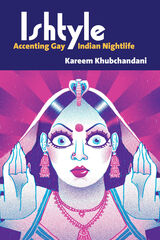 Ishtyle: Accenting Gay Indian Nightlife
Kareem Khubchandani
University of Michigan Press, 2020 Ishtyle follows queer South Asian men across borders into gay neighborhoods, nightclubs, bars, and house parties in Bangalore and Chicago. Bringing the cultural practices they are most familiar with into these spaces, these men accent the aesthetics of nightlife cultures through performance. Kareem Khubchandani develops the notion of “ishtyle” to name this accented style, while also showing how brown bodies inadvertently become accents themselves, ornamental inclusions in the racialized grammar of desire. Ishtyle allows us to reimagine a global class perpetually represented as docile and desexualized workers caught in the web of global capitalism. The book highlights a different kind of labor, the embodied work these men do to feel queer and sexy together. Engaging major themes in queer studies, Khubchandani explains how his interlocutors’ performances stage relationships between: colonial law and public sexuality; film divas and queer fans; and race, caste, and desire. Ultimately, the book demonstrates that the unlikely site of nightlife can be a productive venue for the study of global politics and its institutional hierarchies.
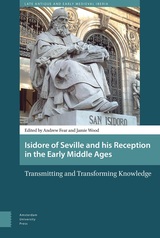 Isidore of Seville and his Reception in the Early Middle Ages: Transmitting and Transforming Knowledge
Edited by Andrew Fear and Jamie Wood
Amsterdam University Press, 2016 Isidore of Seville (560—636) was a crucial figure in the preservation and sharing of classical and early Christian knowledge. His compilations of the works of earlier authorities formed an essential part of monastic education for centuries. Due to the vast amount of information he gathered and its wide dissemination in the Middle Ages, Pope John Paul II even named Isidore the patron saint of the Internet in 1997. This volume represents a cross section of the various approaches scholars have taken toward Isidore’s writings. The essays explore his sources, how he selected and arranged them for posterity, and how his legacy was reflected in later generations’ work across the early medieval West. Rich in archival detail, this collection provides a wealth of interdisciplinary expertise on one of history’s greatest intellectuals.
Isidorean Perceptions of Order: The Exeter Book Riddles and Medieval Latin Enigmata
Mercedes Salvador-Bello
West Virginia University Press, 2015 This book discusses the considerable influence exerted by Isidore’s Etymologiae on the compilation of early medieval enigmata. Either in the form of thematic clusters or pairs, Isidorean encyclopedic patterns are observed not only in major Latin riddle collections in verse but can also be detected in the two vernacular assemblages contained in the Exeter Book. As with encyclopedias, the topic-centered arrangement of riddles was pursued by compilers as a strategy intended to optimize the didactic and instructional possibilities inherent in these texts and favor the readers’ assimilation of their contents. This book thus provides a thoroughgoing investigation of medieval riddling, with special attention to the Exeter Book Riddles, demonstrating that this genre constituted an important part of the school curriculum of the early Middle Ages.
ISIS vol 104 num 1
The University of Chicago Press
University of Chicago Press Journals, 2013
ISIS vol 104 num 2
The University of Chicago Press
University of Chicago Press Journals, 2013
ISIS vol 104 num 3
The University of Chicago Press
University of Chicago Press Journals, 2013
ISIS vol 104 num 4
The University of Chicago Press
University of Chicago Press Journals, 2013
ISIS vol 105 num 1
The University of Chicago Press
University of Chicago Press Journals, 2014
ISIS vol 105 num 2
The University of Chicago Press
University of Chicago Press Journals, 2014
ISIS vol 105 num 3
The University of Chicago Press
University of Chicago Press Journals, 2014
ISIS vol 105 num 4
The University of Chicago Press
University of Chicago Press Journals, 2014
ISIS vol 106 num 1
The University of Chicago Press
University of Chicago Press Journals, 2015
ISIS vol 106 num 2
The University of Chicago Press
University of Chicago Press Journals, 2015
ISIS vol 106 num 3
The University of Chicago Press
University of Chicago Press Journals, 2015
ISIS vol 106 num 4
The University of Chicago Press
University of Chicago Press Journals, 2015
ISIS vol 107 num 1
The University of Chicago Press
University of Chicago Press Journals, 2016
ISIS vol 107 num 2
The University of Chicago Press
University of Chicago Press Journals, 2016
ISIS vol 107 num 3
The University of Chicago Press
University of Chicago Press Journals, 2016
ISIS vol 107 num 4
The University of Chicago Press
University of Chicago Press Journals, 2016
ISIS vol 108 num 1
The University of Chicago Press
University of Chicago Press Journals, 2017
ISIS vol 108 num 2
The University of Chicago Press
University of Chicago Press Journals, 2017
ISIS vol 108 num 3
The University of Chicago Press
University of Chicago Press Journals, 2017
ISIS vol 108 num 4
The University of Chicago Press
University of Chicago Press Journals, 2017
ISIS vol 109 num 1
The University of Chicago Press
University of Chicago Press Journals, 2018
ISIS vol 109 num 2
The University of Chicago Press
University of Chicago Press Journals, 2018
ISIS vol 109 num 3
The University of Chicago Press
University of Chicago Press Journals, 2018
ISIS vol 109 num 4
The University of Chicago Press
University of Chicago Press Journals, 2018 This is volume 109 issue 4 of Isis. Since its inception in 1912, Isis has featured scholarly articles, research notes, and commentary on the history of science, medicine, and technology and their cultural influences. Review essays and book reviews on new contributions to the discipline are also included. An official publication of the History of Science Society, Isis is the oldest English-language journal in the field.
ISIS vol 110 num 1
The University of Chicago Press
University of Chicago Press Journals, 2019
ISIS vol 110 num 2
The University of Chicago Press
University of Chicago Press Journals, 2019
ISIS vol 110 num 3
The University of Chicago Press
University of Chicago Press Journals, 2019
ISIS vol 110 num 4
The University of Chicago Press
University of Chicago Press Journals, 2019
ISIS vol 111 num 1
The University of Chicago Press
University of Chicago Press Journals, 2020
ISIS vol 111 num 2
The University of Chicago Press
University of Chicago Press Journals, 2020
ISIS vol 111 num 3
The University of Chicago Press
University of Chicago Press Journals, 2020
ISIS vol 111 num 4
The University of Chicago Press
University of Chicago Press Journals, 2020
Isis, volume 112 number 4 (December 2021)
The University of Chicago Press
University of Chicago Press Journals, 2021 This is volume 112 issue 4 of Isis. Since its inception in 1912, Isis has featured scholarly articles, research notes, and commentary on the history of science, medicine, and technology and their cultural influences. Review essays and book reviews on new contributions to the discipline are also included. An official publication of the History of Science Society, Isis is the oldest English-language journal in the field.
Isis, volume 113 number 1 (March 2022)
The University of Chicago Press
University of Chicago Press Journals, 2022 This is volume 113 issue 1 of Isis. Since its inception in 1912, Isis has featured scholarly articles, research notes, and commentary on the history of science, medicine, and technology and their cultural influences. Review essays and book reviews on new contributions to the discipline are also included. An official publication of the History of Science Society, Isis is the oldest English-language journal in the field.
Isis, volume 113 number 2 (June 2022)
The University of Chicago Press
University of Chicago Press Journals, 2022 This is volume 113 issue 2 of Isis. Since its inception in 1912, Isis has featured scholarly articles, research notes, and commentary on the history of science, medicine, and technology and their cultural influences. Review essays and book reviews on new contributions to the discipline are also included. An official publication of the History of Science Society, Isis is the oldest English-language journal in the field.
Isis, volume 113 number 3 (September 2022)
The University of Chicago Press
University of Chicago Press Journals, 2022 This is volume 113 issue 3 of Isis. Since its inception in 1912, Isis has featured scholarly articles, research notes, and commentary on the history of science, medicine, and technology and their cultural influences. Review essays and book reviews on new contributions to the discipline are also included. An official publication of the History of Science Society, Isis is the oldest English-language journal in the field.
Isis, volume 113 number 4 (December 2022)
The University of Chicago Press
University of Chicago Press Journals, 2022 This is volume 113 issue 4 of Isis. Since its inception in 1912, Isis has featured scholarly articles, research notes, and commentary on the history of science, medicine, and technology and their cultural influences. Review essays and book reviews on new contributions to the discipline are also included. An official publication of the History of Science Society, Isis is the oldest English-language journal in the field.
Isis, volume 114 number 1 (March 2023)
The University of Chicago Press
University of Chicago Press Journals, 2023 This is volume 114 issue 1 of Isis. Since its inception in 1912, Isis has featured scholarly articles, research notes, and commentary on the history of science, medicine, and technology and their cultural influences. Review essays and book reviews on new contributions to the discipline are also included. An official publication of the History of Science Society, Isis is the oldest English-language journal in the field.
Isis, volume 114 number 2 (June 2023)
The University of Chicago Press
University of Chicago Press Journals, 2023 This is volume 114 issue 2 of Isis. Since its inception in 1912, Isis has featured scholarly articles, research notes, and commentary on the history of science, medicine, and technology and their cultural influences. Review essays and book reviews on new contributions to the discipline are also included. An official publication of the History of Science Society, Isis is the oldest English-language journal in the field.
Isis, volume 114 number 3 (September 2023)
The University of Chicago Press
University of Chicago Press Journals, 2023 This is volume 114 issue 3 of Isis. Since its inception in 1912, Isis has featured scholarly articles, research notes, and commentary on the history of science, medicine, and technology and their cultural influences. Review essays and book reviews on new contributions to the discipline are also included. An official publication of the History of Science Society, Isis is the oldest English-language journal in the field.
Isis, volume 114 number 4 (December 2023)
The University of Chicago Press
University of Chicago Press Journals, 2023 This is volume 114 issue 4 of Isis. Since its inception in 1912, Isis has featured scholarly articles, research notes, and commentary on the history of science, medicine, and technology and their cultural influences. Review essays and book reviews on new contributions to the discipline are also included. An official publication of the History of Science Society, Isis is the oldest English-language journal in the field.
Isis, volume 115 number 1 (March 2024)
The University of Chicago Press
University of Chicago Press Journals, 2024 This is volume 115 issue 1 of Isis. Since its inception in 1912, Isis has featured scholarly articles, research notes, and commentary on the history of science, medicine, and technology and their cultural influences. Review essays and book reviews on new contributions to the discipline are also included. An official publication of the History of Science Society, Isis is the oldest English-language journal in the field.
Isis, volume 115 number 2 (June 2024)
The University of Chicago Press
University of Chicago Press Journals, 2024 This is volume 115 issue 2 of Isis. Since its inception in 1912, Isis has featured scholarly articles, research notes, and commentary on the history of science, medicine, and technology and their cultural influences. Review essays and book reviews on new contributions to the discipline are also included. An official publication of the History of Science Society, Isis is the oldest English-language journal in the field.
Isis, volume 115 number 3 (September 2024)
The University of Chicago Press
University of Chicago Press Journals, 2024 This is volume 115 issue 3 of Isis. Since its inception in 1912, Isis has featured scholarly articles, research notes, and commentary on the history of science, medicine, and technology and their cultural influences. Review essays and book reviews on new contributions to the discipline are also included. An official publication of the History of Science Society, Isis is the oldest English-language journal in the field.
Isis, volume 115 number 4 (December 2024)
The University of Chicago Press
University of Chicago Press Journals, 2024 This is volume 115 issue 4 of Isis. Since its inception in 1912, Isis has featured scholarly articles, research notes, and commentary on the history of science, medicine, and technology and their cultural influences. Review essays and book reviews on new contributions to the discipline are also included. An official publication of the History of Science Society, Isis is the oldest English-language journal in the field.
Isis, volume 116 number 1 (March 2025)
The University of Chicago Press
University of Chicago Press Journals, 2025 This is volume 116 issue 1 of Isis. Since its inception in 1912, Isis has featured scholarly articles, research notes, and commentary on the history of science, medicine, and technology and their cultural influences. Review essays and book reviews on new contributions to the discipline are also included. An official publication of the History of Science Society, Isis is the oldest English-language journal in the field.
Isis, volume 116 number 2 (June 2025)
The University of Chicago Press
University of Chicago Press Journals, 2025 This is volume 116 issue 2 of Isis. Since its inception in 1912, Isis has featured scholarly articles, research notes, and commentary on the history of science, medicine, and technology and their cultural influences. Review essays and book reviews on new contributions to the discipline are also included. An official publication of the History of Science Society, Isis is the oldest English-language journal in the field.
Isis, volume 116 number 3 (September 2025)
The University of Chicago Press
University of Chicago Press Journals, 2025 This is volume 116 issue 3 of Isis. Since its inception in 1912, Isis has featured scholarly articles, research notes, and commentary on the history of science, medicine, and technology and their cultural influences. Review essays and book reviews on new contributions to the discipline are also included. An official publication of the History of Science Society, Isis is the oldest English-language journal in the field.
Islam
Fazlur Rahman
University of Chicago Press, 1979 Fazlur Rahman's Islam is aptly titled, in that this slim volume constitutes an incisive and surprisingly comprehensive history and analysis of Islam—its history, its conflicts, its legacy—and its prospects. From Mohammed to the late twentieth century, Rahman traces the development of Islam as a religion and, more importantly, as an intellectual tradition, offering both an easily understood introduction to the faith and an impassioned argument for its future direction.
Islam: A Concise Introduction
Neal Robinson
Georgetown University Press, 1999 This book provides a concise yet panoramic overview of Islam, unlike most introductory books, which focus mainly on the development of Islamic institutions in the classical period. To place Islam in perspective, Neal Robinson discusses the problems raised by Western perceptions of Islam and provides a brief account of Islamic history down to the present. He then explains major topics in Islamic worship to help readers understand it as a living faith. Appendices guide the novice through the structure of Arabic names, transliteration, and the Islamic calendar and festivals.
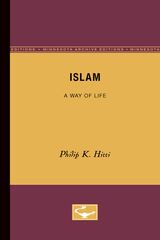 Islam: A Way of Life
Philip Hitti
University of Minnesota Press, 1970
Professor Hitti, the distinguished orientalist, writes vividly and on a basis of lifelong scholarship about Islam, showing that it is not only a religion but also a state and a culture and that in these overlapping and interacting aspects it is a whole way of life.Writing of Islam the religion Professor Hitti describes it as a system of beliefs and practices initially revealed by Allah to Muhammad in the seventh century, enshrined in the Arabic Koran, complemented by tradition, and modified through the ages in response to changes in time and place.Islam the state, he shows, is a political entity with an aggregate of institutions based on koranic law, founded by Muhammad in Medina, developed by his successors (caliphs) at the expense of the Persian and East Roman empires to a height unattained in either ancient or medieval times, and then fragmented into splinter states in western Asia, northern Africa, and southwestern and southeastern Europe.Islam the culture, he explains, is a compound of varied elements -- ancient Semitic, Indo-Persian, Hellenic -- synthesizes under the caliphate and expressed primarily through the medium of the Arabic tongue. Unlike the other two, Islam the culture was mainly formulated by conquered peoples rather than by Arabians. From the middle of the eighth century to the end of the twelfth century, it was unsurpassed in its literary, scientific, and philosophic output. In the final chapter, discussing the confrontation of Islamic culture with modernity, the author maintains that the world can view with gratitude Arab contributions to the past and can look with hope to their accomplishments in the future.
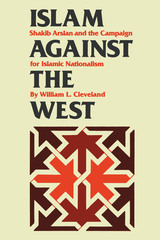 Islam against the West: Shakib Arslan and the Campaign for Islamic Nationalism
By William L. Cleveland
University of Texas Press, 1985 This book gives a unique perspective on the interwar history of the Middle East. By telling the life story of one man, it illuminates the political and cultural struggles of an era. Shakib Arslan (1869–1946) was a leading member of the generation of Ottoman Arabs who came to professional maturity just before the final defeat of the Ottoman Empire. Born to a powerful Lebanese Druze family, Arslan grew up perfectly suited to his time and place in history. He was one of the leading writers of his day and a dexterous, ambitious politician. But, by the end of World War I, Arslan and others of his generation found themselves adrift in a world no longer of their choosing, as the once great Ottoman state lay broken before the West. Rather than retreating from public life in those dark days, however, Arslan emerged militant in his opposition to Western encroachment on Islamic lands and tireless in his crusade to bring the organizing principles of a universalist Islam to the age of emerging nation-states. Organizer, pamphleteer, diplomat, spokesman, and symbol, Arslan became one of the dominant, and most controversial, Muslim political figures in the two decades between the wars. His involvements were so varied and intense that to study his life is to bring into focus all the major political issues and intellectual currents of the era. By the end of his career he was both praised and vilified, but he was arguably the most widely read Arab author of his day. Curiously, Arslan has received relatively little attention in English-language research. This may well be due less to his contemporary importance than to the perspective from which Western scholarship has viewed Middle Eastern intellectual history. Arslan was not one of the winners. For many his evocation of the old imperial ideal and his insistence on the strategic importance of Islamic ideals seemed to be simply archaic protest in a secular age. But this impeccably researched and beautifully written biography demonstrates the power and importance of Arslan’s activist heritage, reinterpreting it for its own time and showing its importance for ours.
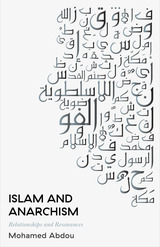 Islam and Anarchism: Relationships and Resonances
Mohamed Abdou
Pluto Press, 2021 'One of the fiercest books I've ever read' - Jasbir K. Puar
Discourse around Muslims and Islam all too often lapses into a false dichotomy of Orientalist and fundamentalist tropes. A popular reimagining of Islam is urgently needed. Yet it is a perhaps unexpected political philosophical tradition that has the most to offer in this pursuit: anarchism.
Islam and Anarchism is a highly original and interdisciplinary work, which simultaneously disrupts two commonly held beliefs - that Islam is necessarily authoritarian and capitalist; and that anarchism is necessarily anti-religious and anti-spiritual. Deeply rooted in key Islamic concepts and textual sources, and drawing on radical Indigenous, Islamic anarchistic and social movement discourses, Abdou proposes 'Anarcha-Islam'.
Constructing a decolonial, non-authoritarian and non-capitalist Islamic anarchism, Islam and Anarchism philosophically and theologically challenges the classist, sexist, racist, ageist, queerphobic and ableist inequalities in both post- and neo-colonial societies like Egypt, and settler-colonial societies such as Canada and the USA.
Islam and Democacy: What is the Real Question?
Asef Bayat
Amsterdam University Press, 2007 Is Islam compatible with democracy? The text examines one of the most frequently-asked and yet misguided questions. Democratic ethos should not and cannot be deduced from some essence of religions supposedly inscribed in the scriptures. Rather, they are the outcome of political struggles that push Islam toward democratic or authoritarian directions. Asef Bayat offers a new approach to examine Islam and democracy arguing how the social struggles of diverse Muslim populations, those with different interests and orientation, render Islam to embrace democratic ideas or authoritarian disposition. "Islamism" and "post-Islamism" are discussed as representing two contrasting movements which have taken Islam into different, authoritarian and inclusive, political directions.
Islam and Ecology: A Bestowed Trust
Richard C. Foltz
Harvard University Press, 2003 Islam is the religion of over one billion people and is practiced in virtually every country on earth. The articulation of an Islamic environmental ethic in contemporary terms is all the more urgent because Western-style conservation efforts do not fit all cultural and philosophical traditions.
This volume outlines the Islamic view of the cosmic order and reviews the ways an Islamic world view can be interpreted, reassessed, and applied to such environmental problems as pollution and water scarcity. Sections on social justice and on issues of sustainability and development look at the history and roots of the current environmental crisis; at the broader context of women's rights of equal access to both natural and social resources; and at the interconnectedness of environmental protection and the alleviation of human poverty.
Islam and Education: Myths and Truths
Edited by Wadad Kadi and Victor Billeh
University of Chicago Press, 2007 In this timely volume based on a special issue of Comparative Education Review, leading comparative education scholars explore the world of education in Islam from the medieval era to today, illuminating the continuing struggle among Islamic scholars and educators over whether to reform or resist as a way of preserving identity. Islam and Education offers a rare overview of the great diversity in forms of Islamic education, dispelling misinterpretations and documenting the ever-evolving relationship of Islamic education to the West. It should be necessary reading for all humanists and social scientists wishing to understand the nexus between schools and societies, the spiritual dimensions of learning, and the social configuration of educational institutions.
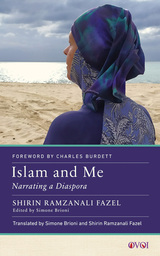 Islam and Me: Narrating a Diaspora
Shirin Ramzanali Fazel
Rutgers University Press, 2023 Growing up in Mogadishu, Somalia, Shirin Ramzanali Fazel was immersed in the language and culture of Italy, Somalia’s former colonizer. Yet when she moved to Italy as a young mother in the 1970s, she discovered a country where immigrants and Muslims were viewed with a mixture of curiosity and suspicion–where, even today, she and her children must seemingly prove they are Italian.
In Islam and Me, Fazel tells her story and shares the experiences of other Muslim women living in Italy, revealing the wide variety of Muslim identities and the common prejudices they encounter. Looking at Italian school textbooks, newspapers, and TV programs, she invites us to change the way Muslim immigrants, and especially women, are depicted in both news reports and scholarly research. Islam and Me is a meditation on our multireligious, multiethnic, and multilingual reality, as well as an exploration of how we might reimagine national culture and identity so that they become more diverse, inclusive, and anti-racist.
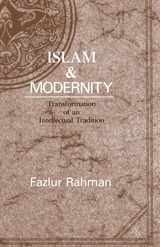 Islam and Modernity: Transformation of an Intellectual Tradition
Fazlur Rahman
University of Chicago Press, 1984 "As Professor Fazlur Rahman shows in the latest of a series of important contributions to Islamic intellectual history, the characteristic problems of the Muslim modernists—the adaptation to the needs of the contemporary situation of a holy book which draws its specific examples from the conditions of the seventh century and earlier—are by no means new. . . . In Professor Rahman's view the intellectual and therefore the social development of Islam has been impeded and distorted by two interrelated errors. The first was committed by those who, in reading the Koran, failed to recognize the differences between general principles and specific responses to 'concrete and particular historical situations.' . . . This very rigidity gave rise to the second major error, that of the secularists. By teaching and interpreting the Koran in such a way as to admit of no change or development, the dogmatists had created a situation in which Muslim societies, faced with the imperative need to educate their people for life in the modern world, were forced to make a painful and self-defeating choice—either to abandon Koranic Islam, or to turn their backs on the modern world."—Bernard Lewis, New York Review of Books
"In this work, Professor Fazlur Rahman presents a positively ambitious blueprint for the transformation of the intellectual tradition of Islam: theology, ethics, philosophy and jurisprudence. Over the voices advocating a return to Islam or the reestablishment of the Sharia, the guide for action, he astutely and soberly asks: What and which Islam? More importantly, how does one get to 'normative' Islam? The author counsels, and passionately demonstrates, that for Islam to be actually what Muslims claim it to be—comprehensive in scope and efficacious for every age and place—Muslim scholars and educationists must reevaluate their methodology and hermeneutics. In spelling out the necessary and sound methodology, he is at once courageous, serious and profound."—Wadi Z. Haddad, American-Arab Affairs
 Islam and Nazi Germany’s War
David Motadel
Harvard University Press, 2014 Winner of the Ernst Fraenkel Prize, Wiener Holocaust Library
An Open Letters Monthly Best History Book of the Year
A New York Post “Must-Read”
In the most crucial phase of the Second World War, German troops confronted the Allies across lands largely populated by Muslims. Nazi officials saw Islam as a powerful force with the same enemies as Germany: the British Empire, the Soviet Union, and the Jews. Islam and Nazi Germany’s War is the first comprehensive account of Berlin’s remarkably ambitious attempts to build an alliance with the Islamic world.
“Motadel describes the Mufti’s Nazi dealings vividly…Impeccably researched and clearly written, [his] book will transform our understanding of the Nazi policies that were, Motadel writes, some ‘of the most vigorous attempts to politicize and instrumentalize Islam in modern history.’”
—Dominic Green, Wall Street Journal
“Motadel’s treatment of an unsavory segment of modern Muslim history is as revealing as it is nuanced. Its strength lies not just in its erudite account of the Nazi perception of Islam but also in illustrating how the Allies used exactly the same tactics to rally Muslims against Hitler. With the specter of Isis haunting the world, it contains lessons from history we all need to learn.”
—Ziauddin Sardar, The Independent
 Islam and Politics in East Africa: The Sufi Order in Tanzania
August H. Nimtz Jr.
University of Minnesota Press, 1980 Islam and Politics in East Africa was first published in 1980. Minnesota Archive Editions uses digital technology to make long-unavailable books once again accessible, and are published unaltered from the original University of Minnesota Press editions. Focusing on the interplay of religion, society, and politics, August Nimtz examines the role of sufi tariqas (brotherhoods) in Tanzania, where he observed an African Muslim society at first hand. Nimtz opens this book with a historical account of Islam in East Africa, and in subsequent chapters analyzes the role of tariqas in Tanzania and, more specifically, in the coastal city of Bagamoyo. Using a conceptual framework derived from contemporary political theories on social cleavages and individual interests. Nimtz explains why the tariqa is important in the process of political change. The fundamental cleavage in Muslim East Africa, he notes, is that of "whites" versus blacks. Nimtz contends that the tariqus, in serving the interest of blacks (that is, Africans), became in turn vehicles for the mass mobilization of African Muslims during the anti-colonial struggle. In Bagamoyo he finds a similar process and, in addition, reveals that the tariqas have served African interests in opposition to those of "whites" because of the individual benefits they provide. At the same time, Nimtz concludes, the social structure of East African Muslim society has ensured that Africans would be particularly attracted to these benefits. This work will interest both observers of African political development and specialists in the Islamic studies.
 Islam and Politics in Indonesia: The Masyumi Party between Democracy and Integralism
Rémy Madinier
National University of Singapore Press, 2015 The Masyumi Party, which was active in Indonesia from 1945 to 1960, constitutes the boldest attempt to date at reconciling Islam and democracy. Masyumi proposed a vision of society and government which was not bound by a literalist application of Islamic doctrine but rather inspired by the values of Islam. It set out moderate policies which were both favourable to the West and tolerant towards other religious communities in Indonesia. Although the party made significant strides towards the elaboration of a Muslim democracy, its achievements were nonetheless precarious: it was eventually outlawed in 1960 for having resisted Sukarno’s slide towards authoritarianism, and the refusal of Suharto’s regime to reinstate the party left its leaders disenchanted and marginalised. Many of those leaders subsequently turned to a form of Islam known as integralism, a radical doctrine echoing certain characteristics of 19th-century Catholic integralism, which contributed to the advent of Muslim neo-fundamentalism in Indonesia.
This book examines the Masyumi Party from its roots in early 20th-century Muslim reformism to its contemporary legacy, and offers a perspective on political Islam which provides an alternative to the more widely-studied model of Middle-Eastern Islam. The party’s experience teaches us much about the fine line separating a moderate form of Islam open to democracy and a certain degree of secularisation from the sort of religious intransigence which can threaten the country’s denominational coexistence.
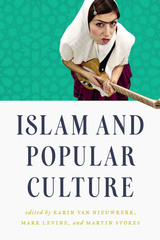 Islam and Popular Culture
Edited by Karin van Nieuwkerk, Mark LeVine, and Martin Stokes
University of Texas Press, 2016 Popular culture serves as a fresh and revealing window on contemporary developments in the Muslim world because it is a site where many important and controversial issues are explored and debated. Aesthetic expression has become intertwined with politics and religion due to the uprisings of the “Arab Spring,” while, at the same time, Islamist authorities are showing increasingly accommodating and populist attitudes toward popular culture. Not simply a “westernizing” or “secularizing” force, as some have asserted, popular culture now plays a growing role in defining what it means to be Muslim. With well-structured chapters that explain key concepts clearly, Islam and Popular Culture addresses new trends and developments that merge popular arts and Islam. Its eighteen case studies by eminent scholars cover a wide range of topics, such as lifestyle, dress, revolutionary street theater, graffiti, popular music, poetry, television drama, visual culture, and dance throughout the Muslim world from Indonesia, Africa, and the Middle East to Europe. The first comprehensive overview of this important subject, Islam and Popular Culture offers essential new ways of understanding the diverse religious discourses and pious ethics expressed in popular art productions, the cultural politics of states and movements, and the global flows of popular culture in the Muslim world.
Islam and Secularity: The Future of Europe's Public Sphere
Nilüfer Göle
Duke University Press, 2015 In Islam and Secularity Nilüfer Göle takes on two pressing issues: the transforming relationship between Islam and Western secular modernity and the impact of the Muslim presence in Europe. Göle shows how the visibility of Islamic practice in the European public sphere unsettles narratives of Western secularism. As mutually constitutive, Islam and secularism permeate each other, the effects of which play out in embodied and aesthetic practices and are accompanied by fear, anxiety, and violence. In this timely book, Göle illuminates the recent rethinking of secularism and religion, of modernity and resistance to it, of the public significance of sexuality, and of the shifting terrain of identity in contemporary Europe.
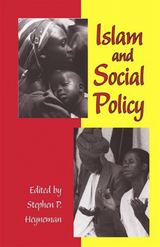 Islam and Social Policy
Stephen P. Heyneman
Vanderbilt University Press, 2004 At a time when more nuanced understandings of Muslim countries and their legal and social practices are urgently needed in the West, the appearance of this collection is especially welcome. In these illuminating and accessible essays, the contributors explain how Islam sees itself in terms of social policy, how it treats women, and how it encourages charity, education, and general social welfare.
The essays encompass many regional cultures and draw on court records and legal debates, field work on government ministries, and an extensive reading of Islamic law. In his overview of waqf (similar to the Western idea of a foundation, in which an endowment is set aside in perpetuity for specified purposes), Ahmad Dallal explains how charity, a central organizing principle in Islam, is itself organized and how waqf, traditionally a source of revenue for charitable purposes, can also become a source of tension and conflict. Donna Lee Bowen, in her essay on the position of women in Islamic law, points out the crucial differences between the Islamic principles of family equity and the Western notion of individual equality. In a subsequent essay, Bowen addresses the problems surrounding family planning and the dilemmas that have arisen within the Muslim world over differing ideas about birth control. The two final essays look at specific instances of how the modern state has treated Islamic social policy. Gail Richardson examines zakat, an Islamic tax used to assist the poor, and its administration in Pakistan. Carol Underwood, meanwhile, explores public health policy in Iran, both before and after the Islamic revolution that deposed the Shah.
Addressing some of the most profound misunderstandings between Islamic and Western societies, Islam and Social Policy will be of vital interest not only to scholars and policymakers but to anyone concerned with Islam's critical place in the modern world.
Islam and the Arabs in Spanish Scholarship (16th Century to the Present): Second Edition
James T. Monroe
Harvard University Press Spanish Arabism was a touchstone of the major intellectual and political issues facing Spain as it emerged from its imperial past into its current form as a modern nation-state. James T. Monroe’s survey of four centuries of Spanish scholarship on the cultural history of al-Andalus (Muslim Spain) establishes Spanish scholars on the forefront of European scholars confronting the Orientalism and colonialism at the heart of their national projects.
This reissue of James T. Monroe’s classic study of Spanish Arabism features a new foreword by Michelle M. Hamilton and David A. Wacks that offers an overview of its impact and of how the investigation of Spanish Arabism has blossomed since the publication of Monroe’s pathbreaking study.
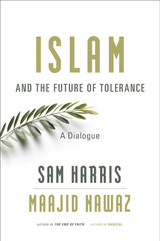 Islam and the Future of Tolerance: A Dialogue
Sam Harris and Maajid Nawaz
Harvard University Press, 2015 “A civil but honest dialogue…As illuminating as it is fascinating.”
—Ayaan Hirsi Ali
Is Islam a religion of peace or war? Is it amenable to reform? Why do so many Muslims seem to be drawn to extremism? And what do words like jihadism and fundamentalism really mean? In a world riven by misunderstanding and violence, Sam Harris—a famous atheist—and Maajid Nawaz—a former radical—demonstrate how two people with very different religious views can find common ground and invite you to join in an urgently needed conversation.
“How refreshing to read an honest yet affectionate exchange between the Islamist-turned-liberal-Muslim Maajid Nawaz and the neuroscientist who advocates mindful atheism, Sam Harris…Their back-and-forth clarifies multiple confusions that plague the public conversation about Islam.”
—Irshad Manji, New York Times Book Review
“It is sadly uncommon, in any era, to find dialogue based on facts and reason—but even more rarely are Muslim and non-Muslim intellectuals able to maintain critical distance on broad questions about Islam. Which makes Islam and the Future of Tolerance something of a unicorn…Most conversations about religion are marked by the inability of either side to listen, but here, at last, is a proper debate.”
—New Statesman
Islam and the Political: Theory, Governance and International Relations
Amr G. E. Sabet
Pluto Press, 2008 This book compares Islamic and Western political formulations, highlighting areas of agreement and disparity. Building on this analysis, the author goes on to show that political Islam offers a serious alternative to the dominant political system and ideology of the West.
Sabet argues that rather than leading to a "Clash of Civlizations" or the assimilation of Islam into the Western system, a positive process of interactive self-reflection between Islam and liberal democracy is the best way forward.
Beginning this process, Sabet highlights key concepts of Islamic political thought and brings them into dialogue with Western modernity. The resulting synthesis is essential reading for advanced undergraduate and graduate students of Islamic and Middle Eastern politics, political theory, comparative politics and international relations.
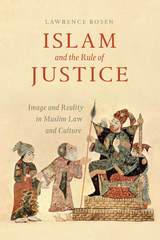 Islam and the Rule of Justice: Image and Reality in Muslim Law and Culture
Lawrence Rosen
University of Chicago Press, 2018 In the West, we tend to think of Islamic law as an arcane and rigid legal system, bound by formulaic texts yet suffused by unfettered discretion. While judges may indeed refer to passages in the classical texts or have recourse to their own orientations, images of binding doctrine and unbounded choice do not reflect the full reality of the Islamic law in its everyday practice. Whether in the Arabic-speaking world, the Muslim portions of South and Southeast Asia, or the countries to which many Muslims have migrated, Islamic law works is readily misunderstood if the local cultures in which it is embedded are not taken into account.
With Islam and the Rule of Justice, Lawrence Rosen analyzes a number of these misperceptions. Drawing on specific cases, he explores the application of Islamic law to the treatment of women (who win most of their cases), the relations between Muslims and Jews (which frequently involve close personal and financial ties), and the structure of widespread corruption (which played a key role in prompting the Arab Spring). From these case studie the role of informal mechanisms in the resolution of local disputes. The author also provides a close reading of the trial of Zacarias Moussaoui, who was charged in an American court with helping to carry out the 9/11 attacks, using insights into how Islamic justice works to explain the defendant’s actions during the trial. The book closes with an examination of how Islamic cultural concepts may come to bear on the constitutional structure and legal reforms many Muslim countries have been undertaking.
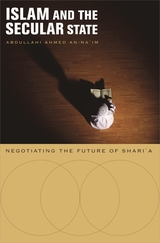 Islam and the Secular State: Negotiating the Future of Shari`a
Abdullahi Ahmed An-Na`im
Harvard University Press, 2008 What should be the place of Shari‘a—Islamic religious law—in predominantly Muslim societies of the world? In this ambitious and topical book, a Muslim scholar and human rights activist envisions a positive and sustainable role for Shari‘a, based on a profound rethinking of the relationship between religion and the secular state in all societies.
An-Na‘im argues that the coercive enforcement of Shari‘a by the state betrays the Qur’an’s insistence on voluntary acceptance of Islam. Just as the state should be secure from the misuse of religious authority, Shari‘a should be freed from the control of the state. State policies or legislation must be based on civic reasons accessible to citizens of all religions. Showing that throughout the history of Islam, Islam and the state have normally been separate, An-Na‘im maintains that ideas of human rights and citizenship are more consistent with Islamic principles than with claims of a supposedly Islamic state to enforce Shari‘a. In fact, he suggests, the very idea of an “Islamic state” is based on European ideas of state and law, and not Shari‘a or the Islamic tradition.
Bold, pragmatic, and deeply rooted in Islamic history and theology, Islam and the Secular State offers a workable future for the place of Shari‘a in Muslim societies.
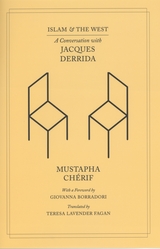 Islam and the West: A Conversation with Jacques Derrida
Mustapha Chérif
University of Chicago Press, 2008 In the spring of 2003, Jacques Derrida sat down for a public debate in Paris with Algerian intellectual Mustapha Chérif. The eminent philosopher arrived at the event directly from the hospital where he had just been diagnosed with pancreatic cancer, the illness that would take his life just over a year later. That he still participated in the exchange testifies to the magnitude of the subject at hand: the increasingly distressed relationship between Islam and the West, and the questions of freedom, justice, and democracy that surround it. As Chérif relates in this account of their dialogue, the topic of Islam held special resonance for Derrida—perhaps it is to be expected that near the end of his life his thoughts would return to Algeria, the country where he was born in 1930. Indeed, these roots served as the impetus for their conversation, which first centers on the ways in which Derrida’s Algerian-Jewish identity has shaped his thinking. From there, the two men move to broader questions of secularism and democracy; to politics and religion and how the former manipulates the latter; and to the parallels between xenophobia in the West and fanaticism among Islamists. Ultimately, the discussion is an attempt to tear down the notion that Islam and the West are two civilizations locked in a bitter struggle for supremacy and to reconsider them as the two shores of the Mediterranean—two halves of the same geographical, religious, and cultural sphere. Islam and the West is a crucial opportunity to further our understanding of Derrida’s views on the key political and religious divisions of our time and an often moving testament to the power of friendship and solidarity to surmount them.
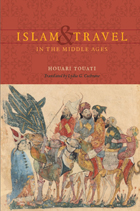 Islam and Travel in the Middle Ages
Houari Touati
University of Chicago Press, 2010 In the Middle Ages, Muslim travelers embarked on a rihla, or world tour, as surveyors, emissaries, and educators. On these journeys, voyagers not only interacted with foreign cultures—touring Greek civilization, exploring the Middle East and North Africa, and seeing parts of Europe—they also established both philosophical and geographic boundaries between the faithful and the heathen. These voyages thus gave the Islamic world, which at the time extended from the Maghreb to the Indus Valley, a coherent identity. Islam and Travel in the Middle Ages assesses both the religious and philosophical aspects of travel, as well as the economic and cultural conditions that made the rihla possible. Houari Touati tracks the compilers of the hadith who culled oral traditions linked to the prophet, the linguists and lexicologists who journeyed to the desert to learn Bedouin Arabic, the geographers who mapped the Muslim world, and the students who ventured to study with holy men and scholars. Travel, with its costs, discomforts, and dangers, emerges in this study as both a means of spiritual growth and a metaphor for progress. Touati’s book will interest a broad range of scholars in history, literature, and anthropology.
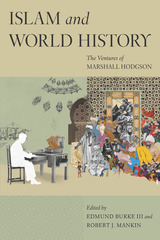 Islam and World History: The Ventures of Marshall Hodgson
Edited by Edmund Burke and Robert J. Mankin
University of Chicago Press, 2018 Published in 1974, Marshall Hodgson’s The Venture of Islam was a watershed moment in the study of Islam. By locating the history of Islamic societies in a global perspective, Hodgson challenged the orientalist paradigms that had stunted the development of Islamic studies and provided an alternative approach to world history. Edited by Edmund Burke III and Robert Mankin, Islam and World History explores the complexity of Hodgson’s thought, the daring of his ideas, and the global context of his world historical insights into, among other themes, Islam and world history, gender in Islam, and the problem of Muslim universality.
In our post-9/11 world, Hodgson’s historical vision and moral engagement have never been more relevant. A towering achievement, Islam and World History will prove to be the definitive statement on Hodgson’s relevance in the twenty-first century and will introduce his influential work to a new generation of readers.
Islam: Between Divine Message and History
Abdelmajid Sharfi
Central European University Press, 2005 Why this book? What can it add to the many works that have already explored Islam as a history, a doctrine, a law, and a code of ethics? The bulk of Islamic thought nowadays is either a repetition of and rumination about what the ancients have already said, or the tackling of partial issues that falls short of a comprehensive view and a theoretical framework. All too often ideology replaces real knowledge. This work attempts to introduce the characteristics of the Mohammedan Mission, with the aspiration to be faithful to its essential purposes and to historical truth at the same time. The author thus illustrates the different ways in which people have understood the Mission and the reasons that led them to those various interpretations. The book presents several alternative interpretations that actually existed but did not enjoy widespread acceptance and popularity.
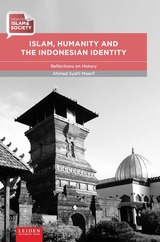 Islam, Humanity and the Indonesian Identity: Reflections on History
Ahmad Syafii Maarif
Leiden University Press, 2018 "Islam exists in global history with its richly variegated cultural and social realities. When these specific cultural contexts are marginalized, Islam is reduced to an ahistorical religion without the ability to contribute to humanity. This limited understanding of Islam has been a contributing factor in many of the violent conflicts in the present day. Reflecting on Islam in Indonesia, the world’s third largest democracy, supporting the largest Muslim population, Ahmad Syafii Maarif argues for an understanding that is both faithful to Islam’s essential teachings and open to constantly changing social and cultural contexts. Building on this, he then addresses critical contemporary issues such as democracy, human rights, religious freedom, the status of women, and the future of Islam. Through this book the breadth and depth of the ideas of one of Indonesia’s foremost Muslim scholars are made accessible for English language readership."
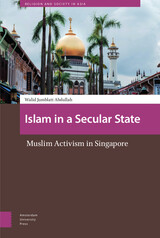 Islam in a Secular State: Muslim Activism in Singapore
Walid Jumblatt Abdullah
Amsterdam University Press, 2021 The overtly secular state of Singapore has unapologetically maintained an interventionist approach to governance in the realm of religion. Islam is particularly managed by the state. Muslim activists thus have to meticulously navigate these realities – in addition to being a minority community – in order to maximize their influence in the political system. Significantly, Muslim activists are not a monolith: there exists a multitude of political and theological differences amongst them. Islam in a Secular State: Muslim Activism in Singapore analyses the following categories of Muslim activists: Islamic religious scholars (ulama), liberal Muslims, and the more conservative-minded individuals. Due to constricting political realities, many activists attempt to align themselves with the state, and call upon the state to be an arbiter in their disagreements with other factions. Though there are activists who challenge the state, these are by far in the minority, and are typically unable to assert their influence in a sustained manner. The author draws upon his own experiences as a researcher and as someone who was involved in some of the discourses explored in this book.
Islam in Indonesia: Contrasting Images and Interpretations
Edited by Jajat Burhanudin and Kees van Dijk
Amsterdam University Press, 2013 While Muslims in Indonesia have begun to turn towards a strict adherence to Islam, the reality of the socio-religious environment is much more complicated than a simple shift towards fundamentalism. In this volume, contributors explore the multifaceted role of Islam in Indonesia from a variety of different perspectives, drawing on carefully compiled case studies. Topics covered include religious education, the increasing number of Muslim feminists in Indonesia, the role of Indonesia in the greater Muslim world, social activism and the middle class, and the interaction between Muslim radio and religious identity.
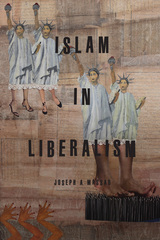 Islam in Liberalism
Joseph A. Massad
University of Chicago Press, 2014 In the popular imagination, Islam is often associated with words like oppression, totalitarianism, intolerance, cruelty, misogyny, and homophobia, while its presumed antonyms are Christianity, the West, liberalism, individualism, freedom, citizenship, and democracy. In the most alarmist views, the West’s most cherished values—freedom, equality, and tolerance—are said to be endangered by Islam worldwide.
Joseph Massad’s Islam in Liberalism explores what Islam has become in today’s world, with full attention to the multiplication of its meanings and interpretations. He seeks to understand how anxieties about tyranny, intolerance, misogyny, and homophobia, seen in the politics of the Middle East, are projected onto Islam itself. Massad shows that through this projection Europe emerges as democratic and tolerant, feminist, and pro-LGBT rights—or, in short, Islam-free. Massad documents the Christian and liberal idea that we should missionize democracy, women’s rights, sexual rights, tolerance, equality, and even therapies to cure Muslims of their un-European, un-Christian, and illiberal ways. Along the way he sheds light on a variety of controversial topics, including the meanings of democracy—and the ideological assumption that Islam is not compatible with it while Christianity is—women in Islam, sexuality and sexual freedom, and the idea of Abrahamic religions valorizing an interfaith agenda. Islam in Liberalism is an unflinching critique of Western assumptions and of the liberalism that Europe and Euro-America blindly present as a type of salvation to an assumingly unenlightened Islam.
 Islam in the Digital Age: E-Jihad, Online Fatwas and Cyber Islamic Environments
Gary R. Bunt
Pluto Press, 2003 The Internet is an increasingly important source of information for many people in the Muslim world. Many Muslims in majority and minority contexts rely on the Internet -- including websites and e-mail -- as a primary source of news, information and communication about Islam. As a result, a new media culture is emerging which is having a significant impact on areas of global Muslim consciousness. Post-September 11th, this phenomenon has grown more rapidly than ever.
Gary R. Bunt provides a fascinating account of the issues at stake, identifying two radical new concepts:
Firstly, the emergence of e-jihad ('Electronic Jihad') originating from diverse Muslim perspectives -- this is described in its many forms relating to the different definitions of 'jihad', including on-line activism (ranging from promoting militaristic activities to hacking, to co-ordinating peaceful protests) and Muslim expression post 9/11.
Secondly, he discusses religious authority on the Internet -- including the concept of on-line fatwas and their influence in diverse settings, and the complexities of conflicting notions of religious authority.
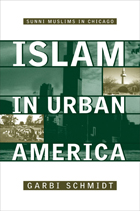 Islam In Urban America: Sunni Muslims In Chicago
Garbi Schmidt
Temple University Press, 2004 In recent years, world events have trained a harsh spotlight on the Muslim religion and its adherents. The misunderstanding and bias against Muslims in the United States not only persists but has deepened. In this detailed study of an immigrant community in Chicago, Garbi Schmidt considers the formation and meaning of an "American Islam." This vivid portrait of the people and the institutions that draw them together contributes to the academic literature on ethnic and religious identity at the same time as it depicts an immigrant community's struggle against bias and forces that threaten its cohesion.Chicago has long been home to Muslim immigrants from numerous countries in the Middle East and South Asia. For some members of these groups religion carries more weight than ethnic identity in the American context and enables them to form and participate in a broad spectrum of institutions that support their religious and social interests. Schmidt offers her observations of the schools and student associations that serve young Muslims as well as the social, religious, and political organizations that serve adults. By looking at the ways in which children, adolescents, and adults come together in these institutions, she is able to show the dynamic process in which a variegated American Muslim identity takes shape. Readers will come away from this book with a better understanding of the ideological and cultural differences among Muslims and a greater appreciation of their struggles in becoming Americans.
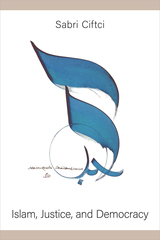 Islam, Justice, and Democracy
Sabri Ciftci
Temple University Press, 2022 Justice (al-‘adl) is one of the principal values of the Islamic faith. In Islam, Justice, and Democracy, Sabri Ciftci explores the historical, philosophical, and empirical foundations of justice to examine how religious values relate to Muslim political preferences and behavior. He focuses on Muslim agency and democracy to explain how ordinary Muslims use the conceptions of divine justice—either servitude to God or exercising free will against oppressors—to make sense of real-world problems. Using ethnographic research, interviews, and public opinion surveys as well as the works of Islamist ideologues, archives of Islamist journals, and other sources, Ciftci shows that building contemporary incarnations of Islamist justice is, in essence, a highly practical political project that has formative effects on Muslim political attitudes. Islam, Justice, and Democracy compares the recent Arab Spring protests to the constitutionalist movements of the nineteenth and twentieth centuries in the Middle East to demonstrate the continuities and rifts a century apart. By putting justice at the center of democratic thinking in the Muslim world, Ciftci reconsiders Islam's potential in engendering both democratic ideals and authoritarian preferences.
 Islam, Nationalism and Democracy: a Political Biography of Mohammad Natsir
Audrey R. Kahin
National University of Singapore Press, 2012 As Indonesia's leading Muslim politician in the second half of the 20th century, Mohammad Natsir (1908-1993) went from heading the country's first post-independence government and largest Islamic political party to spending years in rebellion and in prison. After initially welcoming Soekarno's overthrow in 1965, he became one of the most outspoken critics of the successor Suharto government's increasingly autocratic rule. Natsir's copious writings stretch from his student days in the late colonial period, when his debates with Soekarno over the character of Indonesian nationalism first attracted public attention, to the years immediately preceding his death when his trenchant criticisms brought him the enmity of the Suharto regime. They reveal a man struggling to harmonize his deep Islamic faith with his equally firm belief in national independence and democracy. Drawing from a wide range of materials, including these writings and extensive interviews with the subject, this political biography of Natsir positions an important Muslim politician and thinker in the context of a critical period of Indonesia's history, and describes his vision of how a newly independent country could embrace religion without sacrificing its democratic values.
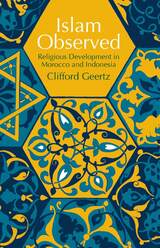 Islam Observed: Religious Development in Morocco and Indonesia
Clifford Geertz
University of Chicago Press, 1971 "In four brief chapters," writes Clifford Geertz in his preface, "I have attempted both to lay out a general framework for the comparative analysis of religion and to apply it to a study of the development of a supposedly single creed, Islam, in two quite contrasting civilizations, the Indonesian and the Moroccan."
Mr. Geertz begins his argument by outlining the problem conceptually and providing an overview of the two countries. He then traces the evolution of their classical religious styles which, with disparate settings and unique histories, produced strikingly different spiritual climates. So in Morocco, the Islamic conception of life came to mean activism, moralism, and intense individuality, while in Indonesia the same concept emphasized aestheticism, inwardness, and the radical dissolution of personality. In order to assess the significance of these interesting developments, Mr. Geertz sets forth a series of theoretical observations concerning the social role of religion.
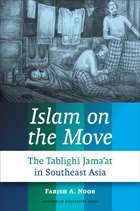 Islam on the Move: The Tablighi Jama'at in Southeast Asia
Farish A. Noor
Amsterdam University Press, 2012 In this exhaustive examination of the rise and spread of the Tablighi Jama’at, which is arguably the world’s largest lay Islamic missionary movement, Farish Ahmad-Noor provides extensive research on the group as well as several conversion narratives from Tablighi members in a number of Asian countries. A key study of an important and complex movement, this volume locates the spiritual framework of the sect in the context of the national and political climate of the countries in which its followers live. Moreover, Ahmad-Noor analyzes the way in which Tablighi followers themselves see the movement, and he traces the way in which internal and external perspectives shape the religion. Islam on the Move seeks to create a more nuanced and variegated portrait of Islam than the reductivist narrative of the religion that became commonplace in the mainstream Western media after the events of September 11th.
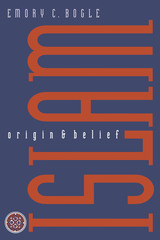 Islam: Origin and Belief
By Emory C. Bogle
University of Texas Press, 1998 Islam is the fastest-growing religion in the world today. An understanding of its beliefs and practices has become essential knowledge not only for religious and political leaders but also for ordinary citizens who increasingly interact with Muslims as neighbors, coworkers, and schoolmates. This book is designed to offer the general public a concise overview of the origins, basic beliefs, and common practices of Islam, as well as the reasons for its dramatic resurgence in recent times. Emory Bogle details the life mission of the prophet Muhammad and describes the spread of Islam after his death. He accounts for the rise and contemporary influence of Shi'i Islam, a topic of particular interest to Western readers. Bogle also explains the basic beliefs ("The Five Pillars") of Islam, as well as the role played by the Qur'an (Islam's scriptures), the hadith (the words and behavior of Muhammad), and the shari'a (Islamic law).
Islam, Politics and Change: The Indonesian Experience after the Fall of Suharto
Edited by Kees van Dijk and Nico J. G. Kaptein
Leiden University Press, 2015 The decades-long rule of President Suharto in Indonesia was ended by violent protests throughout the country in the spring of 1998. Following Suharto’s resignation, Indonesia successfully made the transition from an authoritarian state to a democracy, and this book explores the effects of that transformation on Islamic political organizations in Indonesia, which, for the first time in forty years, were legally allowed to campaign and promote their agenda. The contributors to this book consider the effects of these changes on the influence of orthodoxy and radicalism in Indonesian life and politics, the status of women, and the fate of religious minorities.
 Islam, Postmodernism and Other Futures: A Ziauddin Sardar Reader
Edited by Sohail Inayatullah and Gail Boxwell
Pluto Press, 2003 Ziauddin Sardar is a prolific writer and an insightful cultural commentator. His latest book, Why Do People Hate America?, has been a regular feature in bestseller lists in several countries. In the UK, he is known as a leading intellectual and his regular contributions to the Observer, the Independent and the New Statesman have brought his writings to a wide audience. As one of our most high-profile Muslim intellectuals, he has also become an increasingly important voice in the media since the events of September 11th 2001.
This is the first collection of his writings that offers a comprehensive introduction to his thought. Starting with his analysis of his own position as a British Muslim and a writer, it goes on to explore issues of Islam and cultural change, education, identity, post-modernism and the future. Drawn from a broad range of his work in scholarly journals as well as from his many books on aspects of culture and society, it includes his most frequently cited papers and makes an ideal introduction to the immense scope of his work in cultural studies.
Ziaddin Sardar is currently the editor of Third Text and Visiting Professor of Cultural Studies at City University, London. His books for Pluto Press include Postmodernism and the Other and Aliens R Us.
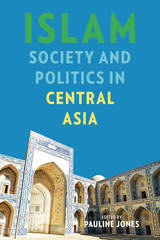 Islam, Society, and Politics in Central Asia
Pauline Jones
University of Pittsburgh Press, 2016 During the 1990s, there was a general consensus that Central Asia was witnessing an Islamic revival after independence, and that this occurrence would follow similar events throughout the Islamic world in the prior two decades, which had negative effects on both social and political development. Twenty years later, we are still struggling to fully understand the transformation of Islam in a region that’s evolved through a complex and dynamic process, involving diversity in belief and practice, religious authority, and political intervention. This volume seeks to shed light on these crucial questions by bringing together an international group of scholars to offer a new perspective on Central Asian states and societies.
The chapters provide analysis through four distinct categories: the everyday practice of Islam across local communities; state policies toward Islam, focusing on attempts to regulate public and private practice through cultural, legal, and political institutions and how these differ from Soviet policies; how religious actors influence communities in the practice of Islam, state policies towards the religion, and subsequent communal responses to state regulations; and how knowledge of and interaction with the larger Islamic world is shaping Central Asia’s current Islamic revival and state responses.
The contributors, a multidisciplinary and international group of leading scholars, develop fresh insights that both corroborate and contradict findings from previous research, while also highlighting the problem of making any generalizations about Islam in individual states or the region. As such, this volume provides new and impactful analysis for scholars, students, and policy makers concerned with Central Asia.
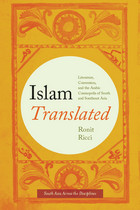 Islam Translated: Literature, Conversion, and the Arabic Cosmopolis of South and Southeast Asia
Ronit Ricci
University of Chicago Press, 2011 The spread of Islam eastward into South and Southeast Asia was one of the most significant cultural shifts in world history. As it expanded into these regions, Islam was received by cultures vastly different from those in the Middle East, incorporating them into a diverse global community that stretched from India to the Philippines.
In Islam Translated, Ronit Ricci uses the Book of One Thousand Questions—from its Arabic original to its adaptations into the Javanese, Malay, and Tamil languages between the sixteenth and twentieth centuries—as a means to consider connections that linked Muslims across divides of distance and culture. Examining the circulation of this Islamic text and its varied literary forms, Ricci explores how processes of literary translation and religious conversion were historically interconnected forms of globalization, mutually dependent, and creatively reformulated within societies making the transition to Islam.
 Islam without Fear: Egypt and the New Islamists
Raymond William Baker
Harvard University Press, 2003 For the last several decades an influential group of Egyptian scholars and public intellectuals has been having a profound effect in the Islamic world. Raymond Baker offers a compelling portrait of these New Islamists--Islamic scholars, lawyers, judges, and journalists who provide the moral and intellectual foundations for a more fully realized Islamic community, open to the world and with full rights of active citizenship for women and non-Muslims.
The New Islamists have a record of constructive engagement in Egyptian public life, balanced by an unequivocal critique of the excesses of Islamist extremists. Baker shows how the New Islamists are translating their thinking into action in education and the arts, economics and social life, and politics and foreign relations despite an authoritarian political environment. For the first time, Baker allows us to hear in context the most important New Islamist voices, including Muhammad al Ghazzaly, Kamal Abul Magd, Muhammad Selim al Awa, Fahmy Huwaidy, Tareq al Bishry, and Yusuf al Qaradawy--regarded by some as the most influential Islamic scholar in the world today. A potentially transformative force in global Islam, the New Islamists define Islam as a civilization that engages others and searches for common ground through shared values such as justice, peace, human rights, and democracy.
Islam without Fear is an impressive achievement that contributes to the understanding of Islam in general and the possibilities of a centrist Islamist politics in particular.
Islamic Activists: The Anti-Enlightenment Democrats
Deina Ali Abdelkader
Pluto Press, 2011 In the hysteria surrounding Political Islam, it is difficult to find analysis that doesn't feel the need to justify the existence of Islamic leaders or react to the West's fear of 'extremists'. In Islamic Activists, Deina Ali Abdelkader shows us what Islamic leaders and activists believe and what they think about just governance.
Explaining and comparing Islamist ideas, including those about leadership, justice and minority rights, Abdelkader explains how these have been represented in the writings of important historical and contemporary Islamists. In doing so, Abdelkader reveals that democracy is not the sole preserve of those who support Enlightenment values, offering the reader a chance to understand the populist non-violent side of Islamic activism. This includes an examination of the ideas of the leaders of the populist Islamist movements in Egypt, Tunisia and Morocco.
Islamic Africa 1.1
Muhammad Sani Umar
Northwestern University Press, 2010 Islamic Africa is a peer-reviewed, multidisciplinary, academic journal published by Northwestern University Press in collaboration with the Institute for the Study of Islamic Thought in Africa (ISITA), based at Northwestern University, Evanston. The journal incorporates Sudanic Africa, retaining its focus on historical sources, bibliographies, and methodologies.
Islamic Africa promotes interaction between scholars of Islam and Africa across all continents and across historical periods. We welcome papers on any aspect of Islam and Muslim life pertaining to Africa and/or Africans from the humanities and the social sciences, especially those originating from the African continent.
Islamic Africa 1.2
Muhammad Sani Umar
Northwestern University Press, 2010 Islamic Africa is a peer-reviewed, multidisciplinary, academic journal published by Northwestern University Press in collaboration with the Institute for the Study of Islamic Thought in Africa (ISITA), based at Northwestern University, Evanston. The journal incorporates Sudanic Africa, retaining its focus on historical sources, bibliographies, and methodologies.
Islamic Africa promotes interaction between scholars of Islam and Africa across all continents and across historical periods. We welcome papers on any aspect of Islam and Muslim life pertaining to Africa and/or Africans from the humanities and the social sciences, especially those originating from the African continent.
Islamic Africa 2.1
Muhammad S. Umar
Northwestern University Press, 2011 Islamic Africa is a peer-reviewed, multidisciplinary, academic journal published by Northwestern University Press in collaboration with the Institute for the Study of Islamic Thought in Africa (ISITA), based at Northwestern University, Evanston. The journal incorporates Sudanic Africa, retaining its focus on historical sources, bibliographies, and methodologies.
Islamic Africa promotes interaction between scholars of Islam and Africa across all continents and across historical periods. We welcome papers on any aspect of Islam and Muslim life pertaining to Africa and/or Africans from the humanities and the social sciences, especially those originating from the African continent.
Islamic Africa 2.2
Muhammad Sani Umar
Northwestern University Press, 2011 Islamic Africa is a peer-reviewed, multidisciplinary, academic journal published by Northwestern University Press in collaboration with the Institute for the Study of Islamic Thought in Africa (ISITA), based at Northwestern University, Evanston. The journal incorporates Sudanic Africa, retaining its focus on historical sources, bibliographies, and methodologies.
Islamic Africa promotes interaction between scholars of Islam and Africa across all continents and across historical periods. We welcome papers on any aspect of Islam and Muslim life pertaining to Africa and/or Africans from the humanities and the social sciences, especially those originating from the African continent.
Islamic Africa 3.1
Muhammad Sani Umar
Northwestern University Press, 2012 Islamic Africa is a peer-reviewed, multidisciplinary, academic journal published by Northwestern University Press in collaboration with the Institute for the Study of Islamic Thought in Africa (ISITA), based at Northwestern University, Evanston. The journal incorporates Sudanic Africa, retaining its focus on historical sources, bibliographies, and methodologies.
Islamic Africa promotes interaction between scholars of Islam and Africa across all continents and across historical periods. We welcome papers on any aspect of Islam and Muslim life pertaining to Africa and/or Africans from the humanities and the social sciences, especially those originating from the African continent.
Islamic Africa 3.2
Scott Reese
Northwestern University Press, 2012 Islamic Africa is a peer-reviewed, multidisciplinary, academic journal published by Northwestern University Press in collaboration with the Institute for the Study of Islamic Thought in Africa (ISITA), based at Northwestern University, Evanston. The journal incorporates Sudanic Africa, retaining its focus on historical sources, bibliographies, and methodologies.
Islamic Africa promotes interaction between scholars of Islam and Africa across all continents and across historical periods. We welcome papers on any aspect of Islam and Muslim life pertaining to Africa and/or Africans from the humanities and the social sciences, especially those originating from the African continent.
Islamic Africa 4.1
Scott Reese
Northwestern University Press, 2013 Islamic Africa is a peer-reviewed, multidisciplinary, academic journal published by Northwestern University Press in collaboration with the Institute for the Study of Islamic Thought in Africa (ISITA), based at Northwestern University, Evanston. The journal incorporates Sudanic Africa, retaining its focus on historical sources, bibliographies, and methodologies.
Islamic Africa promotes interaction between scholars of Islam and Africa across all continents and across historical periods. We welcome papers on any aspect of Islam and Muslim life pertaining to Africa and/or Africans from the humanities and the social sciences, especially those originating from the African continent.
Islamic Africa Electronic Journal
Volume 4, Issue 1 Spring 2013
Islamic Africa 4.2
Scott Reese
Northwestern University Press, 2013 Islamic Africa is a peer-reviewed, multidisciplinary, academic journal published by Northwestern University Press in collaboration with the Institute for the Study of Islamic Thought in Africa (ISITA), based at Northwestern University, Evanston. The journal incorporates Sudanic Africa, retaining its focus on historical sources, bibliographies, and methodologies.
Islamic Africa promotes interaction between scholars of Islam and Africa across all continents and across historical periods. We welcome papers on any aspect of Islam and Muslim life pertaining to Africa and/or Africans from the humanities and the social sciences, especially those originating from the African continent.
Islamic Africa 5.1
Scott Reese
Northwestern University Press, 2014 Islamic Africa is a peer-reviewed, multidisciplinary, academic journal published by Northwestern University Press in collaboration with the Institute for the Study of Islamic Thought in Africa (ISITA), based at Northwestern University, Evanston. The journal incorporates Sudanic Africa, retaining its focus on historical sources, bibliographies, and methodologies.
Islamic Africa promotes interaction between scholars of Islam and Africa across all continents and across historical periods. We welcome papers on any aspect of Islam and Muslim life pertaining to Africa and/or Africans from the humanities and the social sciences, especially those originating from the African continent.
Islamic Africa 5.2
Scott Reese
Northwestern University Press, 2014 Islamic Africa is a peer-reviewed, multidisciplinary, academic journal published by Northwestern University Press in collaboration with the Institute for the Study of Islamic Thought in Africa (ISITA), based at Northwestern University, Evanston. The journal incorporates Sudanic Africa, retaining its focus on historical sources, bibliographies, and methodologies.
Islamic Africa promotes interaction between scholars of Islam and Africa across all continents and across historical periods. We welcome papers on any aspect of Islam and Muslim life pertaining to Africa and/or Africans from the humanities and the social sciences, especially those originating from the African continent.
An Islamic Alliance: Ali Dinar and the Sanusiyya, 1906-1916
Jay Spaulding and Lidwien Kapteijns
Northwestern University Press, 2011 An Islamic Alliance uses non-European sources to portray the defense, by devoutly Islamic leaders, of some of the last parts of the African continent to be conquered during the imperial European "scramble for Africa" that ended with the First World War. These surviving pieces of diplomatic correspondence concentrate on the alliance between Ali Dinar, prince of the sultanate of Dar Fur in the western Sudan, and the leaders of the Sanusi brotherhood then based in southern Libya. In contrast to the European view of the alliance as ephemeral, the documents indicate a sincere, passionate attempt to join--despite immense physical difficulties--an ancient monarchist tradition to a more modern, trade-based sociopolitical organization.
Islamic Architecture on the Move: Motion and Modernity
Edited by Christiane Gruber
Intellect Books, 2016 Even a casual observer can spy traces of Islamic architecture and design on buildings all over the world, a reminder that artistic traditions and visual culture have never been limited to their region or country of origin, but rather are highly diffusible.
This book brings together scholars from architectural studies, design, art history, and other fields to challenge and expand concepts of Islamic architecture. Ranging from eighteenth-century Ottoman tents to manifestations of Islamic motifs in 1960s Hawaii, this richly illustrated volume raises key questions about Islamic architecture, and, more broadly, about how we can rethink our understanding of material, artistic, and cultural mobility in the modern world.
 Islamic Art
Barbara Brend
Harvard University Press, 1991 From the Alhambra to the Taj Mahal, from the Dome of the Rock to the ever evolving art of calligraphy, Barbara Brend traces the development of classic Islamic art from the seventh through the twentieth century.
The term "Islamic art" suggests a unity of style and purpose, and these works are in fact instantly recognizable for their subtlety of line and sumptuous detail. The Islamic world--from Arabia to North Africa and Spain, from Turkey to Central Asia and India--has a shared cultural heritage of extraordinary richness. Yet it is a common tradition that divides into a diversity of styles. So Brend narrates this history region by region, illustrating her discussion with superb examples drawn from all areas in which Muslim artists and craftsmen have excelled--mosque and palace architecture; the art of the book (calligraphy, painting, and bindings); and the decorative arts, including metalwork, carvings, mosaics, pottery, textiles, and carpets. Throughout, the author elucidates forms, aesthetic principles, themes, and imagery. And she points to sources and influences in the different periods--for example, the prominence of jade and chinoiserie after the Mongol invasion. In Islamic Art Brend expertly guides us through the splendors and delicacies of this classic tradition.
 Islamic Art in Detail
Sheila R. Canby
Harvard University Press, 2005 How do we know Islamic art? What tells us that images and artifacts are products of the Muslim world, a culture that has historically extended from Spain to Southeast Asia and spanned a period from A.D. 622 to our day? This exquisitely and extensively illustrated book allows readers to identify those elements and themes that define art forms as Islamic, and to examine them in works of painting and metalwork, in calligraphy and manuscripts, ceramics, glass, wood, and ivory comprising one of the most imposing collections of arts from across the Muslim world.
Arranged thematically--in chapters focusing on religion and belief, the supernatural and natural worlds, feasting, the hunt, war, music, and power--Islamic Art in Detail provides a much-needed cultural context for these widely varied works while pointing out exceptional features. In its exploration of selected works, the book juxtaposes images of each object with enlarged details--details that might otherwise be virtually invisible to the naked eye--affording surprising comparisons between seemingly unrelated pieces and offering a rare multifaceted view of the art, technique, and iconography of some of the Islamic world's most beautiful images and artifacts.
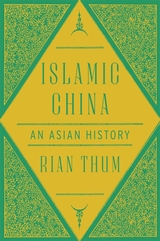 Islamic China: An Asian History
Rian Thum
Harvard University Press, 2025 A deeply learned reassessment of the history of Chinese Muslims, who since the fourteenth century have been subject to a constant program of minoritization.
For more than a millennium, Islam has been a Chinese religion, and native-born Chinese Muslims have played important roles in their homeland—as butchers, merchants, and farmers; diplomats, scholar-officials, and royal astronomers. Yet the Muslims of China have often been understood as inherently foreign, incompatible with Chinese culture. In this reappraisal, Rian Thum recaptures the ordinariness of Chinese Muslims. In doing so, he suggests that these communities, whose classification has so often been seen as problematic, can teach us about the ways social categories are made and maintained in the first place.
Firmly rooted in Chinese and long-neglected Perso-Arabic sources, Islamic China traces the interlinked histories of twenty Chinese Muslims, some famous and some obscure, spread across multiple ethnicities, sects, and centuries. Their stories—emphasizing the diversity of Chinese Muslim communities and their continuous exchanges with other groups both within and beyond China—cut through the flattening narratives that have obscured China’s Muslim heritage. Taken together, the experiences chronicled here offer a fresh view of Islamic China, stretching across Central, Southeast, and South Asia—and of China itself.
While focused on the Ming, Qing, and early Republican eras, Thum also harkens back to earlier centuries and traces the inheritances of this history to the present. Islamic China makes the compelling argument that the abstractions brought to bear on the past have practical implications in today’s People’s Republic of China, where the state enforces an oppressive regime of differentiation and control aimed broadly at Muslims and is routinely exposed for atrocities committed against particular subgroups.
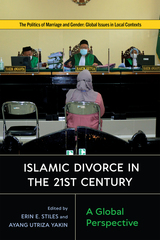 Islamic Divorce in the Twenty-First Century: A Global Perspective
Erin E. Stiles
Rutgers University Press, 2022 Islamic Divorce in the 21st Century shows the wide range of Muslim experiences in marital disputes and in seeking Islamic divorces. For Muslims, having the ability to divorce in accordance with Islamic law is of paramount importance. However, Muslim experiences of divorce practice differ tremendously. The chapters in this volume discuss Islamic divorce from West Africa to Southeast Asia, and each story explores aspects of the everyday realities of disputing and divorcing Muslim couples face in the twenty-first century. The book’s cross-cultural and comparative look at Islamic divorce indicates that Muslim divorces are impacted by global religious discourses on Islamic authority, authenticity, and gender; by global patterns of and approaches to secularity; and by global economic inequalities and attendant patterns of urbanization and migration. Studying divorce as a mode of Islamic law in practice shows us that the Islamic legal tradition is flexible, malleable, and context-dependent.
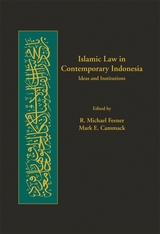 Islamic Law in Contemporary Indonesia: Ideas and Institutions
R. Michael Feener
Harvard University Press Although often neglected in the literature on Islamic law, contemporary Indonesia is an especially rich source of insight into the diverse understandings and uses of the Islamic legal tradition in the modern world. Indonesian Muslims are engaged in vibrant and far-reaching debates over the terms, relevance, and developmental limits of Islamic law, and Indonesia is home to a variety of dynamic state and non-state institutional structures for the generation and application of Islamic doctrine. The essays in this volume provide focused examinations of the internal dynamics of intellectual and institutional elements of Islamic law in modern Indonesia in its recent formations. The first five chapters address issues relating to Islamic legal theory, both its historical development over the past century and analysis of the work of specific groups of contemporary scholars, jurists, and activists. The final seven chapters contain studies of more concrete manifestations of Islamic law in modern Indonesia, including court systems, positive law, the drafting of new "Islamic" legislation, and contemporary debates over the implementation of the Shari'a. Taken together these essays offer a series of substantive introductions to important developments in both the theory and practice of law in the world's most populous Muslim society.
 Islamic Legal Interpretation: Muftis and Their Fatwas
Muhammad Khalid Masud
Harvard University Press, 1996 For more than a millennium, fatwas have guided and shaped Muslim understandings of Islamic law. The whole world knows of Ayatollah Khomeini’s fatwa in the Salman Rushdie case, yet this key institution in Muslim society has not been the subject of a major examination until now.
Ranging in import from the routine to the revolutionary, and in form from one-line answers to short treatises, fatwas have served to reaffirm received wisdom, caution against error, and chart novel responses to changing circumstances. The interpreters, the muftis of Islam, have included the greatest independent scholars of the ages, heads of large state bureaucracies, and unassuming jurists in local districts. Their vital task, which continues today in published collections as well as on radio and television, is to strive to interpret God’s design for the Muslim community.
Islamic Legal Interpretation uses an approach unique in Islamic studies, a casebook of expert analyses of fatwas from a wide range of times and places. The editors’ first chapter sets forth the origins, classical diversity, and modern development of the fatwa, while the following chapters illustrate particular opinions and their contexts. The approach throughout is interdisciplinary, as historians, lawyers, language specialists, and social scientists address fatwas as fundamental sources on both Islamic legal thought and Islamic social history.
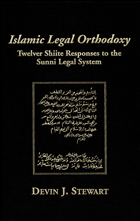 Islamic Legal Orthodoxy
Devin J Stewart
University of Utah Press, 2007 Stewart points to an underlying tension in Shi'ite intellectual history between assimilationist and nativist impulses in the debate over consensus, dissimulation, and in the lives of certain Shi'ite scholars who lived and studied among Sunnis.
One of the most far-reaching developments in the history of Islam was the rise of the four classic Sunni schools of law between the ninth and eleventh centuries CE. Consolidation of these schools went hand in hand with the establishment of jurists’ dominance over religious discourse and social institutions. Orthodoxy came to be defined as the consensus (ijma’) of the Sunni jurists. Devin Stewart argues that it is to the margins of the emerging system that investigators must look to understand its historical dynamics. The development of Twelve Shi’ite jurisprudence in relation and reaction to the Sunni schools is particularly informative.
In Islamic Legal Orthodoxy, Stewart explores the process by which Shi’ite jurists participated in the mainstream of Islamic jurisprudence and were influenced by Sunni legal doctrines. He identifies three main reactions to Sunni legal definitions of othodoxy and the concept of consensus on which it was based. The Akhbaris rejected Sunni legal consensus and juristic authority for a scripture-based system; many Shi’ite outwardly accepted the ground rules of Sunni legal consensus and joined the Shafi’i school of jurisprudence; a third option was to adopt the concept of consensus to create a “fifth,” Shi’ite, legal system.
The development of the Sunni legal system effectively set the ground rules for the marginal sect’s negotiation of their identity with respect to Islamic legal orthodoxy. Accordingly, Shi’ite jurists developed a legal institution that is structurally similar to the four Sunni madhhabs and even today serves as means to position themselves in the Muslim world. Stewart points to an underlying tension in Shi’ite intellectual history between assimilationist and nativist impulses in the debate over consensus, dissmulation (taqiyyah) and the lives of certain Shi’ite scholars who lived and studies among Sunnis.
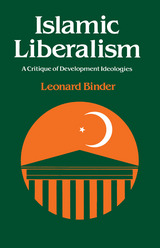 Islamic Liberalism: A Critique of Development Ideologies
Leonard Binder
University of Chicago Press, 1988 The resurgence of Islamic fundamentalism in the 1980s influenced many in the Islamic world to reject Western norms of liberal rationality and to return, instead, to their own tradition for political and cultural inspiration. This rejection of foreign thought threatens to end the centuries-long dialogue between Islam and the West, a dialogue that has produced a nascent Middle Eastern liberalism, along with many less desirable forms of discourse. With Islamic Liberalism, Leonard Binder hopes to reinvigorate that dialogue, asking whether political liberalism can take root in the Middle East without a vigorous Islamic liberalism. But, Binder asks, is an Islamic liberalism possible?
The Islamic political community presents special problems to the development of an indigenous liberalism. That community is conceived of as divinely ordained, and its notions of the good are to be derived from scriptural revelation, not arrived at through rational discourse. Liberal politics would seem to stand little chance of surviving in such an atmosphere, let alone thriving.
Binder responds to the challenge of Edward Said's critique of Orientalism, of a range of neo-Marxian development theorists, of Sayyid Qutb's fundamentalist vision, of Samir Amin's vision of Egypt's role in the Arab awakening, of Tariq al-Bishri's new populism, of Zaki Najib Mahmud's pragmatism, and the structuralism of Arkoun and Laroui. The deconstruction of these varied texts produces a number of persuasive hermeneutical conclusions that are sequentially woven together in a critical argument that refocuses our attention on the central question of political freedom and democracy. In the course of constructing this argument, Binder reopens the dialogue between Western modernity and Islamic authenticity and reveals the surprising extent to which there is a convergent interest in liberal, democratic, civil society. Finally, in a concluding chapter, he addresses the prospects for liberalism in the three major bourgeois states of Islam—Egypt, Turkey, and Iran.
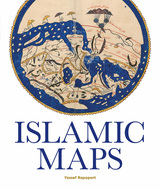 Islamic Maps
Yossef Rapoport
Bodleian Library Publishing, 2019 Spanning the Islamic world, from ninth-century Baghdad to nineteenth-century Iran, this book tells the story of Islamic cartography and the key Muslim map-makers who shaped the art over the centuries. Muslim geographers like al-Khwārazmī and al-Idrīsī developed distinctive styles, often based on geometrical patterns and calligraphy, and their maps covered all the known world, from the sources of the Nile to the European lands of the north and the Wall of Gog and Magog in the east. These map-makers combined novel cartographical techniques with art, science, and geographical knowledge to produce maps that could be both aesthetically stunning and mathematically sophisticated.
Islamic Maps examines Islamic visual interpretations of the world in their historical context through the map-makers themselves. What was the purpose of their maps, what choices did they make, and what arguments about the world were they trying to convey? Lavishly illustrated with stunning manuscripts, beautiful instruments, and Qibla charts, this book shows how maps constructed by Muslim map-makers capture the many dimensions of Islamic civilization across the centuries.
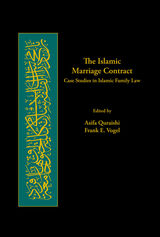 The Islamic Marriage Contract: Case Studies in Islamic Family Law
Asifa Quraishi
Harvard University Press, 2009 It is often said that marriage in Islamic law is a civil contract, not a sacrament. If this is so, this means that the marriage contract is largely governed by the same rules as other contracts, such as sale or hire. But at the same time marriage is a profound concern of the Islamic scriptures of Qur’an and Sunna, and thus at the very core of the law and morality of Islam and of the individual, familial, and social life of Muslims. This volume collects papers from many disciplines examining the Muslim marriage contract. Articles cover doctrines as to marriage contracts (e.g., may a wife stipulate monogamy?); historical instances (e.g., legal advice from thirteenth-century Spain); comparisons with Jewish and canon law; contemporary legal and social practice; and projects of activists for women worldwide.
Demonstrating a new and powerful focus for comparative and historical inquiries into Islamic law and social practices, this book marks a fresh point of departure for the study of Muslim women.
 The Islamic Marriage Contract: Case Studies in Islamic Family Law
Asifa Quraishi
Harvard University Press, 2008 It is often said that marriage in Islamic law is a civil contract, not a sacrament. If this is so, this means that the marriage contract is largely governed by the same rules as other contracts, such as sale or hire. But at the same time marriage is a profound concern of the Islamic scriptures of Qur’an and Sunna, and thus at the very core of the law and morality of Islam and of the individual, familial, and social life of Muslims. This volume collects papers from many disciplines examining the Muslim marriage contract. Articles cover doctrines as to marriage contracts (e.g., may a wife stipulate monogamy?); historical instances (e.g., legal advice from thirteenth-century Spain); comparisons with Jewish and canon law; contemporary legal and social practice; and projects of activists for women worldwide.
Demonstrating a new and powerful focus for comparative and historical inquiries into Islamic law and social practices, this book marks a fresh point of departure for the study of Muslim women.
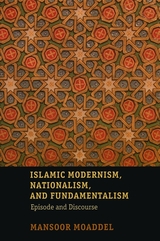 Islamic Modernism, Nationalism, and Fundamentalism: Episode and Discourse
Mansoor Moaddel
University of Chicago Press, 2005 The Islamic world has experienced extensive social changes in modern times—the rise of new social classes, the formation of massive bureaucratic and military states, and the incorporation of its economies into the world capitalist structure. Yet despite these changes, a national consensus on even the most important principles of social organization—the form of government, the status of women, national identity, and rule making—has yet to emerge.
An ambitious comparative historical analysis of ideological production in the Islamic world from the mid-1800s to the present, Mansoor Moaddel's Islamic Modernism, Nationalism, and Fundamentalism provides a unique perspective for understanding the social conditions of these discourses. Moaddel characterizes these movements in terms of a sequence of cultural episodes characterized by ideological debates and religious disputations, each ending with a revolution or military coup. Understanding how the leaders of these movements formulated their discourses is, for Moaddel, the key to understanding Middle Eastern history. This premise allows him to unlock for readers the historical process that started with Islamic modernism and ended with fundamentalism.
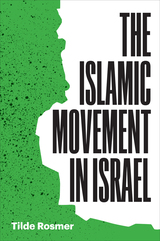 The Islamic Movement in Israel
Tilde Rosmer
University of Texas Press, 2022 Since its establishment in the late 1970s, Israel’s Islamic Movement has grown from a small religious revivalist organization focused on strengthening the faith of Muslim Palestinian citizens of Israel to a countrywide sociopolitical movement with representation in the Israeli legislature. But how did it get here? How does it differ from other Islamic movements in the region? And why does its membership continue to grow? Tilde Rosmer examines these issues in The Islamic Movement in Israel as she tells the story of the movement, its identity, and its activities. Using interviews with movement leaders and activists, their documents, and media reports from Israel and beyond, she traces the movement’s history from its early days to its 1996 split over the issue of its relationship to the state. She then explores how the two factions have functioned since, revealing that while leaders of the two branches have pursued different approaches to the state, until the outlawing of the Northern Branch in 2015, both remained connected and dedicated to providing needed social, education, and health services in Israel’s Palestinian towns and villages. The first book in English on this group, The Islamic Movement in Israel is a timely study about how an Islamist movement operates within the unique circumstances of the Jewish state.
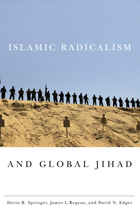 Islamic Radicalism and Global Jihad
Devin R. Springer, James L. Regens, and David N. Edger
Georgetown University Press, 2009 Jihadist ideology inspires a diverse and decentralized collection of radical groups to fight alleged enemies of Islam and to attempt to “restore” a holy caliphate to unite Muslim peoples across the Middle East, Africa, and Asia. Islamic Radicalism and Global Jihad provides unique insights into the philosophical foundations, strategic vision, organizational dynamics, and tactics of the modern jihadist movement—with specific attention to its primary driver, Al-Qa’ida. Springer, Regens, and Edger draw heavily on Arabic language sources seldom seen in the West to explain what jihadists want and how radical thinkers have distorted the teachings of Islam to convince followers to pursue terrorism as a religious duty. With sophisticated and systematic analysis, the authors lead their readers on a fascinating intellectual journey through the differing ideas, goals, and vulnerabilities of the jihadist movement as it has evolved over time. The authors also impart wisdom from their own professional experience with terrorism, counterinsurgency, and intelligence to provide scholars, students, counterterrorism professionals, and general readers with this accessible overview of key radical Islamic thinkers and today’s jihadists.
Islamic Reform and Political Change in Northern Nigeria
Roman Loimeier
Northwestern University Press, 2011 The 1970s and 1980s were times of political and religious turmoil in Nigeria, characterized by governmental upheaval, and aggressive confrontations between the Sufi brotherhoods and the Izala movement. In Islamic Reform and Political Change in Northern Nigeria, Roman Loimeier explores the intermeshing of religion in the struggle for political influence and preservation of the interests of Nigerian Muslims.
Loimeier's careful scholarship combines astute readings of the work of previous scholars--both published and unpublished--with archival material and the findings of his own fieldwork in Nigeria. His work fills a substantial gap in contemporary Nigerian studies. This book provides invaluable and essential reading for serious students of Nigerian politics and of Islamic movements in Africa.
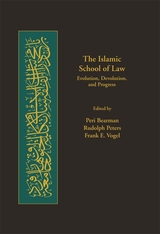 The Islamic School of Law: Evolution, Devolution, and Progress
Peri Bearman
Harvard University Press, 2005 The Islamic school of law, or madhhab, is a concept on which a substantial amount has been written but of which there is still little understanding, and even less consensus. This collection of selected papers from the III International Conference on Islamic Legal Studies, held in May 2000 at the Harvard Law School, offers building blocks toward the entire edifice of understanding the complex development of the madhhab, a development that even in the contemporary dissolution of madhhab lines and grouping continues to fascinate. As scholars look to the construction of a new Islamic legal history, these essays inform on the background to madhhab formation, on inter-madhhab polemics and the drive toward legal authority, on madhhab perpetuation and anti-madhhab tendencies, on the constitutional role of the madhhab, on the madhhab's legislative and adjudicative mechanisms, and on the significance of the madhhab in comparative terms. This volume is of value to anyone interested in the nature of Islamic law.
Islamic Spain, 1250 to 1500
L. P. Harvey
University of Chicago Press, 1990 This is a richly detailed account of Muslim life throughout the kingdoms of Spain, from the fall of Seville, which signaled the beginning of the retreat of Islam, to the Christian reconquest.
"Harvey not only examines the politics of the Nasrids, but also the Islamic communities in the Christian kingdoms of the peninsula. This innovative approach breaks new ground, enables the reader to appreciate the situation of all Spanish Muslims and is fully vindicated. . . . An absorbing and thoroughly informed narrative."—Richard Hitchcock, Times Higher Education Supplement
"L. P. Harvey has produced a beautifully written account of an enthralling subject."—Peter Linehan, The Observer
 Islamic State: Rewriting History
Michael Griffin
Pluto Press, 2015 When the attacks of September 11 sent Westerners in search of reliable information about Al Qaida, Michael Griffin was there: his book Reaping the Whirlwind quickly became the go-to resource for the media, political figures, and ordinary citizens alike.
Now, as Islamic State (also known as ISIS) is moving to take over broad swathes of territory throughout the Middle East, Griffin is back once again, ready to offer nuanced insight, analysis, history, and context for readers looking to understand this new and frightening threat.
An experienced journalist, Griffin tells the story of the development of the Islamic State in his usual fast-paced, narrative driven style, helping us to understand the long roots of the Islamic State in Iraq, their quiet involvement in the Arab Spring, and their rapid rise amid the chaos generated by the Syrian war. He clearly and carefully presents the interlocking web of influence, arms, and money from Saudi Arabia, Qatar, Turkey, and Iraq that have fuelled the rise of Islamic State, and highlights the importance of the uprising against Assad in Syria and the West’s relative inability to influence or support it. Ultimately, Griffin offers a portrait of a complicated, multivalent movement, one with roots in numerous real or perceived grievances and historical mistakes and one with the potential to foment unrest and violence throughout the Middle East for some time to come.
The Islamic State We Knew: Insights Before the Resurgence and Their Implications
Howard J. Shatz
RAND Corporation, 2015 This report provides information known by the end of 2011 about the Islamic State’s origins, finances, organization, methods of establishing territorial control, and response to airpower. Countering the Islamic State can rely, in part, on the great deal of accumulated knowledge available. Iraqis and coalition forces routed the group once, and this history can inform the components of another successful strategy to defeat the Islamic State.
Islamic Studies in the Twenty-first Century
Edited by Léon Buskens and Annemarie van Sandwijk
Amsterdam University Press, 2016 In recent decades, traditional methods of philology and intellectual history, applied to the study of Islam and Muslim societies, have met with considerable criticism from rising generations of scholars who have turned to the social sciences, most notably anthropology and social history, for guidance. This change has been accompanied by the rise of new fields, studying, for example, Islam in Europe and Africa, and new topics, such as the role of gender. This collection surveys these transformations and others, taking stock of the field and showing new paths forward.
The Islamic Utopia: The Illusion of Reform in Saudi Arabia
Andrew Hammond
Pluto Press, 2012 Will Saudi Arabia join the democratic wave in the Middle East? The uprisings and revolutions of 2011 do not, yet, seem to have affected the stability of the House of Saud, which remains secretive, highly repressive and propped up by the West.
The Islamic Utopia uses a range of sources including first-hand reporting and recently released WikiLeaks documents to examine Saudi Arabia in the decade after the 9/11 attacks, when King Abdullah’s 'reform' agenda took centre stage in public debate. It considers Saudi claims of 'exemption' from the democratic demands of the Arab Spring.
Andrew Hammond argues that for too long Western media and governments have accepted Saudi leaders' claims to be a buttress against jihadist Islam and that a new policy is needed towards the House of Saud.
The Islamic World
Edited by William H. McNeill and Marilyn Robinson Waldman
University of Chicago Press, 1984 The Islamic World is a collection of important and representative documents from all periods of Islamic history. From the formative years in Arabia to the confrontations with and responses to modernity, these translations indicate the continuity and development of the youngest of the world's greatest civilizations. Included are historical, theological, philosophical, and political writings, as well as poetry and narratives, from Muslim writers in the Arab lands, Turkey, Persia, and other parts of the Islamic world. The editors have provided informative introductions to each historical period and to the individual texts, making this an enlightening and intriguing first look at Islamic civilization and tradition.
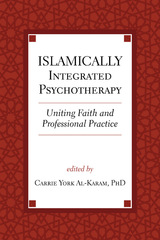 Islamically Integrated Psychotherapy: Uniting Faith and Professional Practice
Carrie York Al-Karam
Templeton Press, 2018 Integrating the Islamic faith with modern psychotherapy is at the forefront of the spiritually integrated psychotherapy movement. To bring this work to wider attention and to promote its continuation, Dr. Carrie York Al-Karam has brought together the present volume of nine essays, each of which is written by a Muslim clinician who practices Islamically integrated psychotherapy (IIP)—a modern approach that unites the teachings, principles, and interventions of the faith with Western therapeutic approaches. As delineated in the Introduction, IIP has emerged from a variety of domains including the psychology of religion and spirituality, multicultural psychology and counseling, transpersonal psychology, Muslim Mental Health, and Islamic Psychology. The individual chapters then describe a variety of ways IIP is practiced by Muslim clinicians in their service provision with Muslim clients. The contributors discuss a wide range of topics, such as how Islam can be viewed as a system for psychological wellbeing, or a “science of the soul”; what marital counseling can look like from an Islamically-integrated perspective; Prophet Mohammed as a psycho-spiritual exemplar in a new approach called The HEART Method; the use of Quranic stories in family therapy; as well as using Islamic teachings when working with Muslim children and adolescents. A description of the various approaches is supplemented with discussions of their theoretical underpinnings as well as research-based recommendations for advancing clinical application. What emerges is a vital resource for Muslim and non-Muslim clinicians alike as well as the lay Muslim reader wanting to know more about how the Islamic faith and psychotherapy are engaging with each other in a modern clinical context.
 Islamicate Sexualities: Translations across Temporal Geographies of Desire
Kathryn Babayan
Harvard University Press, 2008 Islamicate Sexualities: Translations across Temporal Geographies of Desire explores different genealogies of sexuality and questions some of the theoretical emphases and epistemic assumptions affecting current histories of sexuality. Concerned with the dynamic interplay between cultural constructions of gender and sexuality, the anthology moves across disciplinary fields, integrating literary criticism with social and cultural history, and establishes a dialogue between historians (Kathryn Babayan, Frédéric Lagrange, Afsaneh Najmabadi, and Everett Rowson), comparative literary scholars (Sahar Amer and Leyla Rouhi), and critical theorists of sexualities (Valerie Traub, Brad Epps, and Dina al-Kassim).
As a whole, the anthology challenges Middle Eastern Studies with questions that have arisen in recent studies of sexualities, bringing into conversation Euro-American scholarship of sexuality with that of scholars engaged in studies of sexualities across a vast cultural (Iberian, Arabic, and Iranian) and temporal field (from the tenth century to the medieval and the modern).
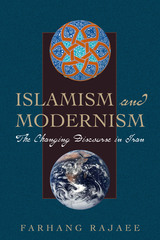 Islamism and Modernism: The Changing Discourse in Iran
By Farhang Rajaee
University of Texas Press, 2007 While many previous books have probed the causes of Iran's Islamic Revolution of 1979, few have focused on the power of religion in shaping a national identity over the decades leading up to it. Islamism and Modernism captures the metamorphosis of the Islamic movement in Iran, from encounters with Great Britain and the United States in the 1920s through twenty-first-century struggles between those seeking to reform Islam's role and those who take a hardline defensive stance. Capturing the views of four generations of Muslim activists, Farhang Rajahee describes how the extremism of the 1960s brought more confidence to concerned Islam-minded Iranians and radicalized the Muslim world while Islamic alternatives to modernity were presented. Subsequent ideologies gave rise to the revolution, which in turn has fed a restructuring of Islam as a faith rather than as an ideology. Presenting thought-provoking discussions of religious thinkers such as Ha'eri, Burujerdi, Bazargan, and Shari'ati, along with contemporaries such as Kadivar, Soroush, and Shabestari, the author sheds rare light on the voices fueling contemporary Islamic thinking in Iran. A comprehensive study of these interwoven aspects of politics, religion, society, and identity, Islamism and Modernism offers crucial new insight into the aftermath of the Iranian Constitutional Revolution fought one hundred years ago—and its ramifications for the newest generation to face the crossroads of modernity and Islamic discourse in modern Iran today.
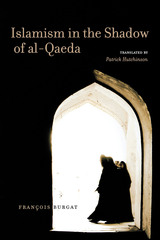 Islamism in the Shadow of al-Qaeda
By François Burgat
University of Texas Press, 2008 A renowned authority on Islamic movements, François Burgat lived for eighteen years in the Arab world, including his time as director of the French Center for Archaeology and Social Sciences at Yemen. He also dedicated many months to fieldwork in North Africa. Bringing Burgat's decades of expertise to the complex dialogues that have marked the post-9/11 world, Islamism in the Shadow of al-Qaeda delivers much-needed clarity and historical perspective. In Burgat's eyes, most of the West's political and media rhetoric has only fueled al-Qaeda's case, revealing a woeful lack of comprehension regarding the violent authoritarianism that divides the Middle East and creates a breeding ground for terrorism. Islamism in the Shadow of al-Qaeda provides a primer of the three eras of political Islam, from the 1928 founding of the Muslim Brothers to the rise of post-colonial dictatorships and the current radicalization of "Generation al-Qaeda." Offering a new roadmap for stability, Burgat bridges the ideologies—political, religious, and cultural—that must be traversed if the deadly sectarianism is to be superseded.
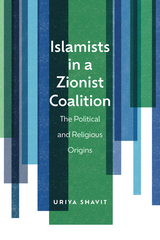 Islamists in a Zionist Coalition: The Political and Religious Origins
Uriya Shavit
Rutgers University Press, 2025 Islamists in a Zionist Coalition: The Political and Religious Origins explores the decision made in 2021 by the United Arab List, the political arm of the Southern Branch of the Islamic Movement in Israel (SIM), to join the Israeli Zionist coalition for the first time, and specifically how and why it was possible for an Islamist movement to become the enabler of a Zionist government without losing the support of its religious scholars or political base. Through analyses of hundreds of books, columns, fatwas, media interviews, and posts on social media, as well as interviews conducted by the author with all the living leaders of the SIM and the United Arab List, Uriya Shavit demonstrates that the Islamic premises on which the SIM operates, rather than limit the party's flexibility, made it possible for the United Arab List to advance a pragmatic political agenda. This book argues that while the decision of the United Arab List to join a Zionist coalition led to dramatic consequences, it was grounded in decades of religious writings that prepared the ground for its legitimization, and aligned with a political orientation with which significant segments of the Arab population identified since the founding of the modern state of Israel.
The Islamization of the Holy Land, 634–1800
Michael Ehrlich
Arc Humanities Press, 2022
From the seventh century onwards the population of the Near East gradually became Muslim. Nevertheless, other religious communities continued to exist, maintaining an enduring presence in the region, despite being surrounded by Muslims and by people becoming Muslims.
This book argues that the causes that led to the conversion of most of the Holy Land's population, as well as the survival of some religious communities, are essentially social and geographic in nature, rather than theological, and that two parallel processes were the main catalysts of Islamization: de-urbanization and urbanization.
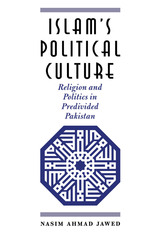 Islam's Political Culture: Religion and Politics in Predivided Pakistan
By Nasim Ahmad Jawed
University of Texas Press, 1999 This book examines the political dimension of Islam in predivided Pakistan (1947-1971), one of the first new Muslim nations to commit itself to an Islamic political order and one in which the national debate on Islamic, political, and ideological issues has been the most persistent, focused, and rich of any dialogues in the contemporary Muslim world. Nasim Jawed draws on the findings of a survey he conducted among two influential social groups—the ulama (traditional religious leaders) and the modern professionals—as well as on the writings of Muslim intellectuals. He probes the major Islamic positions on critical issues concerning national identity, the purpose of the state, the form of government, and free, socialist, and mixed economies. This study contributes to an enhanced understanding of Islam's political culture worldwide, since the issues, positions, and arguments are often similar across the Muslim world. The empirical findings of the study not only outline the ideological backdrop of contemporary Islamic reassertion, but also reveal diversity as well as tensions within it.
The Island: A History of the First Marine Division on Guadalcanal
Herbert Laing Merillat
Westholme Publishing, 2010 A First Hand Contemporary Account of the Guadalcanal Campaign
“This is the real story, soberly, honestly, authoritatively told.”—New York Times “This is a tale of dogged resistance, courage and sacrifice that will remain imperishable in our history.” —Weekly Book Review In August 1942, U.S. Marines landed on the island of Guadalcanal in the South Pacific and defeated Japanese forces for the first time, turning the tide of World War II against Japan. Written by a historian who fought alongside his fellow Marines for the entire four-month campaign, The Island is an indispensable story of this hard-fought victory.
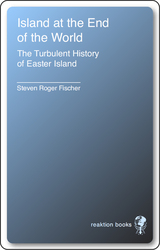 Island at the End of the World: The Turbulent History of Easter Island
Steven Roger Fischer
Reaktion Books, 2005 On a long stretch of green coast in the South Pacific, hundreds of enormous, impassive stone heads stand guard against the ravages of time, war, and disease that have attempted over the centuries to conquer Easter Island. Steven Roger Fischer offers the first English-language history of Easter Island in Island at the End of the World, a fascinating chronicle of adversity, triumph, and the enduring monumentality of the island's stone guards.
A small canoe with Polynesians brought the first humans to Easter Island in 700 CE, and when boat travel in the South Pacific drastically decreased around 1500, the Easter Islanders were forced to adapt in order to survive their isolation. Adaptation, Fischer asserts, was a continuous thread in the life of Easter Island: the first European visitors, who viewed the awe-inspiring monolithic busts in 1722, set off hundreds of years of violent warfare, trade, and disease—from the smallpox, wars, and Great Death that decimated the island to the late nineteenth-century Catholic missionaries who tried to "save" it to a despotic Frenchman who declared sole claim of the island and was soon killed by the remaining 111 islanders. The rituals, leaders, and religions of the Easter Islanders evolved with all of these events, and Fischer is just as attentive to the island's cultural developments as he is to its foreign invasions.
Bringing his history into the modern era, Fischer examines the colonization and annexation of Easter Island by Chile, including the Rapanui people's push for civil rights in 1964 and 1965, by which they gained full citizenship and freedom of movement on the island. As travel to and interest in the island rapidly expand, Island at the End of the World is an essential history of this mysterious site.
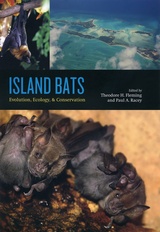 Island Bats: Evolution, Ecology, and Conservation
Edited by Theodore H. Fleming and Paul A. Racey
University of Chicago Press, 2010 The second largest order of mammals, Chiroptera comprises more than one thousand species of bats. Because of their mobility, bats are often the only native mammals on isolated oceanic islands, where more than half of all bat species live. These island bats represent an evolutionarily distinctive and ecologically significant part of the earth’s biological diversity. Island Bats is the first book to focus solely on the evolution, ecology, and conservation of bats living in the world’s island ecosystems. Among other topics, the contributors to this volume examine how the earth’s history has affected the evolution of island bats, investigate how bat populations are affected by volcanic eruptions and hurricanes, and explore the threat of extinction from human disturbance. Geographically diverse, the volume includes studies of the islands of the Caribbean, the Western Indian Ocean, Micronesia, Indonesia, the Philippines, and New Zealand. With its wealth of information from long-term studies, Island Bats provides timely and valuable information about how this fauna has evolved and how it can be conserved.
Island Between
Margaret E. Murie with Illustrations by Olaus J. Murie
University of Alaska Press, 2008 Margaret E. Murie crafts an engrossing tale of Eskimo life in Island Between, as she tells the story of Toozak, a young Inuit from Sevuokuk, known today as St. Lawrence Island. In lyrical prose she chronicles Toozak’s journey, weaving stories of his life as a hunter with narratives of love and jealousy—and even ancient Eskimo myths—to create a moving tale of early Eskimo culture and the impact of its eventual encounters with other peoples. Island Between is a beautifully written novel that explores one man’s complex and delicate relationship with the natural environment and his fellow man.
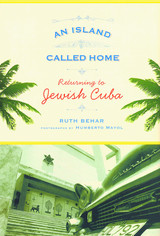 An Island Called Home: Returning to Jewish Cuba
Ruth Behar, Photographs by Humberto Mayol
Rutgers University Press, 2007 Yiddish-speaking Jews thought Cuba was supposed to be a mere layover on the journey to the United States when they arrived in the island country in the 1920s. They even called it “Hotel Cuba.” But then the years passed, and the many Jews who came there from Turkey, Poland, and war-torn Europe stayed in Cuba. The beloved island ceased to be a hotel, and Cuba eventually became “home.” But after Fidel Castro came to power in 1959, the majority of the Jews opposed his communist regime and left in a mass exodus. Though they remade their lives in the United States, they mourned the loss of the Jewish community they had built on the island.
As a child of five, Ruth Behar was caught up in the Jewish exodus from Cuba. Growing up in the United States, she wondered about the Jews who stayed behind. Who were they and why had they stayed? What traces were left of the Jewish presence, of the cemeteries, synagogues, and Torahs? Who was taking care of this legacy? What Jewish memories had managed to survive the years of revolutionary atheism?
An Island Called Home is the story of Behar’s journey back to the island to find answers to these questions. Unlike the exotic image projected by the American media, Behar uncovers a side of Cuban Jews that is poignant and personal. Her moving vignettes of the individuals she meets are coupled with the sensitive photographs of Havana-based photographer Humberto Mayol, who traveled with her.
Together, Behar’s poetic and compassionate prose and Mayol’s shadowy and riveting photographs create an unforgettable portrait of a community that many have seen though few have understood. This book is the first to show both the vitality and the heartbreak that lie behind the project of keeping alive the flame of Jewish memory in Cuba.
Reader Guide (http://rutgerspress.rutgers.edu/pages/behar_reader_guide.aspx)
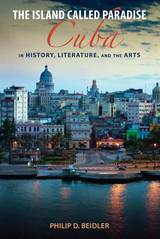 The Island Called Paradise: Cuba in History, Literature, and the Arts
Philip D. Beidler
University of Alabama Press, 2014 A personal and cultural mediation, Philip D. Beidler’s The Island Called Paradise explores the fascinating ways Cuban history and culture have permeated North American consciousness, and vice versa.
In The Island Called Paradise, Philip D. Beidler shares his personal discovery of the vast, rich, and astonishing history of the island of Cuba and the interrelatedness of Cuba and the US.
Cuba first entered Beidler’s consciousness in the early 1960s when he watched with mesmerized anxiety the televised reports of the Cuban missile crisis, a conflict that reduced a multifaceted, centuries-old history between North America and Cuba to the stark duotones of Cold War politics. Fifty years later, when Beidler traveled to the US’s island neighbor, he found a Cuba unlike the nation portrayed in truculent political rhetoric or in the easy preconceptions of US popular culture. Instead he found an entrancing people and landscape with deep historical connections to the US and a dazzling culture that overwhelmed his creative spirit.
In twelve original essays, Beidler reintroduces to English-speaking readers many of the central figures, both real and literary, of Cuban and Cuban-American history. Meet Cecilia Valdés, the young mixed-race heroine of a 1839 novel that takes readers to the poor streets and sumptuous salons of Spanish colonial Cuba, and Narciso López, a real-life Venezuelan adventurer and filibustero who attempted to foment a Cuban uprising against Spain. Both would have been familiar figures to nineteenth-century Americans. Beidler also visits the twentieth-century lives of “the two Ernestos” (Ernest Hemingway and Che Guevara), and the pop-culture Cuban icon Ricky Ricardo.
A country not with one history but multiple layers of history, Cuba becomes a fertile island for Beidler’s exploration. Art, he argues, perpetually crosses walls erected by politics, history, and nationality. At its core, The Island Called Paradise renews and refreshes our knowledge of an older Atlantic world even as we begin to envision a future in which the old bonds between our nations may be restored.
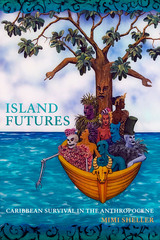 Island Futures: Caribbean Survival in the Anthropocene
Mimi Sheller
Duke University Press, 2020 In Island Futures Mimi Sheller delves into the ecological crises and reconstruction challenges affecting the entire Caribbean region during a time of climate catastrophe. Drawing on fieldwork on postearthquake reconstruction in Haiti, flooding on the Haitian-Dominican border, and recent hurricanes, Sheller shows how ecological vulnerability and the quest for a "just recovery" in the Caribbean emerge from specific transnational political, economic, and cultural dynamics. Because foreigners are largely ignorant of Haiti's political, cultural, and economic contexts, especially the historical role of the United States, their efforts to help often exacerbate inequities. Caribbean survival under ever-worsening environmental and political conditions, Sheller contends, demands radical alternatives to the pervasive neocolonialism, racial capitalism, and US military domination that have perpetuated what she calls the "coloniality of climate." Sheller insists that alternative projects for Haitian reconstruction, social justice, and climate resilience—and the sustainability of the entire region—must be grounded in radical Caribbean intellectual traditions that call for deeper transformations of transnational economies, ecologies, and human relations writ large.
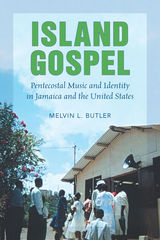 Island Gospel: Pentecostal Music and Identity in Jamaica and the United States
Melvin L. Butler
University of Illinois Press, 2019 Pentecostals throughout Jamaica and the Jamaican diaspora use music to declare what they believe and where they stand in relation to religious and cultural outsiders. Yet the inclusion of secular music forms like ska, reggae, and dancehall complicated music's place in social and ritual practice, challenging Jamaican Pentecostals to reconcile their religious and cultural identities. Melvin Butler journeys into this crossing of boundaries and its impact on Jamaican congregations and the music they make. Using the concept of flow, Butler's ethnography evokes both the experience of Spirit-influenced performance and the transmigrations that fuel the controversial sharing of musical and ritual resources between Jamaica and the United States. Highlighting constructions of religious and cultural identity, Butler illuminates music's vital place in how the devout regulate spiritual and cultural flow while striving to maintain both the sanctity and fluidity of their evolving tradition.Insightful and original, Island Gospel tells the many stories of how music and religious experience unite to create a sense of belonging among Jamaican people of faith.
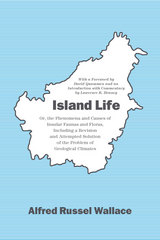 Island Life: Or, the Phenomena and Causes of Insular Faunas and Floras, Including a Revision and Attempted Solution of the Problem of Geological Climates
Alfred Russel Wallace
University of Chicago Press, 2013 Alfred Russel Wallace is best known as the codiscoverer, with Charles Darwin, of natural selection, but he was also history’s foremost tropical naturalist and the father of biogeography, the modern study of the geographical basis of biological diversity. Island Life has long been considered one of his most important works. In it he extends studies on the influence of the glacial epochs on organismal distribution patterns and the characteristics of island biogeography, a topic as vibrant and actively studied today as it was in 1880. The book includes history’s first theory of continental glaciation based on a combination of geographical and astronomical causes, a discussion of island classification, and a survey of worldwide island faunas and floras. The year 2013 will mark the centennial of Wallace’s death and will see a host of symposia and reflections on Wallace’s contributions to evolution and natural history. This reissue of the first edition of Island Life, with a foreword by David Quammen and an extensive commentary by Lawrence R. Heaney, who has spent over three decades studying island biogeography in Southeast Asia, makes this essential and foundational reference available and accessible once again.
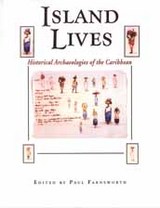 Island Lives: Historical Archaeologies of the Caribbean
Edited by Paul Farnsworth
University of Alabama Press, 2001 This comprehensive study of the historical archaeology of the Caribbean provides sociopolitical context for the ongoing development of national identities. Long before the founding of Jamestown in 1607, there were Spanish forts, bustling towns, sugar plantations, and sea trade flourishing in the Caribbean. While richer nations, particularly the United States, may view the Caribbean today as merely a place for sun and fun, the island colonies were at one time far more important and lucrative to their European empire countries than their North American counterparts. From the 15th to the 19th centuries, as competing colonial powers vied with each other for military and economic advantage in the Western Hemisphere, events in the Caribbean directly influenced the American mainland.
This is one rationale for the close study of historical archaeology in the Caribbean. Another is the growing recognition of how archaeological research can support the defining of national identities for the islands, many of them young independent states struggling to establish themselves economically and politically. By looking at cases in the French West Indies, specifically on Guadeloupe, in the Dutch Antilles and Aruba, in the British Bahamas, on Montserrat and St. Eustatius, on Barbados, and the within the U.S. Virgin Islands, the contributors to Island Lives have produced a broad overview of Caribbean historical archaeology.
Island Lives makes clear that historical archaeology in the Caribbean will continue to grow and diversify due to the interest Caribbean peoples have in recording, preserving, and promoting their culture and heritage; the value it adds to their "heritage tourism"; and the connection it has to African American history and archaeology. In addition, the contributors point to the future by suggesting different trajectories that historical archaeology and its practitioners may take in the Caribbean arena. In so doing, they elucidate the problems and issues faced worldwide by researchers working in colonial and post-colonial societies.
Paul Farnsworth is Associate Professor of Anthropology at Louisiana State University.
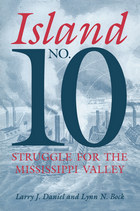 Island No. 10: Struggle for the Mississippi Valley
Lynn N. Bock
University of Alabama Press, 1996 By February 1862 Confederate forces in Kentucky and Tennessee were falling back in disorder. Fort Henry on the Tennessee River and Fort Donelson on the Cumberland River fell to combined land and naval forces under Brigadier General Ulysses S. Grant and Flag Officer Andrew H. Foote. These losses necessitated the abandonment of the Rebel stronghold of Columbus, Kentucky. The entire upper Mississippi Valley lay open to Federal invasion. Toward that end, a new Union army under Major General John Pope began organizing at Commerce, Missouri.
Confederate Major General John P. McCown was sent to plug the breach by fortifying Island No. 10, a one-mile-long island positioned in a bend in the Mississippi River that straddled the boundaries of Tennessee, Missouri, and Kentucky. Pope's army had to be held in check long enough for the main Confederate force, under generals Albert Sidney Johnston and P. G. T. Beauregard, to concentrate and launch a counterattack against Grant's advancing army. The ensuing campaign at Island No. 10 created the first extensive siege of the Civil War. The ultimate capture of the garrison resulted in a new army command for Pope in Virginia. As for the Confederates, the campaign pointed to a faulty western strategy. Simply to concede the rivers and their adjoining cities to the Federal navy was politically unacceptable. Garrison after garrison was captured, however, in the attempt to defend the rivers to the last extremity. Between February 1862 and July 1863 the Confederates lost 64,400 troops, some nine divisions, in defending the rivers. This strategy was a significant contributing factor for Confederate defeat in the West.
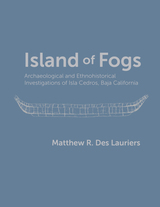 Island of Fogs: Archaeological and Ethnohistorical Investigations of Isla Cedros, Baja California
Matthew R Des Lauriers
University of Utah Press, 2010 Located off the west coast of the Mexican state of Baja California, Isla Cedros—Island of Fogs—is site to some of the most extensive and remarkable archeological discoveries on the continent. Two sites dated to before 12,000 cal BP have been excavated, as well as portions of two large village sites dated to the last one thousand years. Among the artifacts discovered are the earliest fishhooks found on the continent. Drawing on ten years of his own historical, ethnographic, and archaeological research, Matthew Des Lauriers uses Isla Cedros to form hypotheses regarding the ecological, economic, and social nature of island societies. Des Lauriers uses a comparative framework in order to examine both the development and evolution of social structures among Pacific coast maritime hunter-gatherers as well as to track patterns of change. Because it examines the issue of whether human populations can intensively harvest natural resources without causing ecological collapse, Island of Fogs provides a relevant historical counterpart to modern discussions of ecological change and alternative models for sustainable development.
Winner of the Society for American Archaeology Book Award.
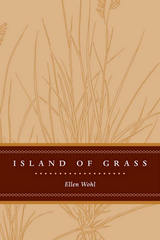 Island of Grass
Ellen E. Wohl
University Press of Colorado, 2009 Island of Grass tells the story of the Cathy Fromme Prairie Natural Area, a 240-acre preserve surrounded by housing developments in Fort Collins, Colorado. This small grassland is a remnant of the once-vast prairies of the West that early European explorers and settlers described as seas of grass.Agricultural land use and urban expansion during the past two centuries have fragmented and altered these prairies. All that remains today are small islands. These remnants cannot support some of the larger animals that once roamed the prairie, but they continue to support a diverse array of plants and animals and can still teach us much about grassland ecology. Through her examinations of daily changes during walks across the Fromme Prairie over the course of a year, Ellen Wohl explores one of the more neglected ecosystems in North America, describing the geology, soils, climate, ecology, and natural history of the area, as well as providing glimpses into the lives of the plants, animals, and microbes inhabiting this landscape. Although small in size, pieces of preserved shortgrass prairie like the Cathy Fromme Prairie Natural Area are rich, diverse, and accessible natural environments deserving of awareness, appreciation, and protection. Anyone concerned with the ecology and conservation of grasslands in general, the ecology and conservation of open space in urban areas, or the natural history of Colorado will be interested in this book.
 The Island of Hermaphrodites
Translated by Kathleen Perry Long
Arizona Center for Medieval and Renaissance Studies, 2025 A scandal in its time and a revelation today, this fearless satire blends courtly decadence with political rebellion in an imagined world of unchecked power.
A scandalous and subversive satire, Island of Hermaphrodites skewers the decadence and corruption of early seventeenth-century French society with razor-sharp wit. Published anonymously in 1605, this daring Menippean satire created an uproar for its irreverent portrayal of the French court, critique of absolute monarchy, and radical questioning of gender and power. A blend of political critique and biting humor, the novel follows an imagined land of aristocratic excess, where opulent feasts, elaborate fashion, and absurd rituals mask the deeper instability of a society built on privilege and deception.
Republished throughout the eighteenth century and connected to the intellectual ferment leading up to the French Revolution, Island of Hermaphrodites remains a strikingly modern indictment of unchecked power and economic exploitation. In its first full English translation, Kathleen P. Long offers new audiences a satirical romp through a world of absurdist power—one that feels politically salient today.
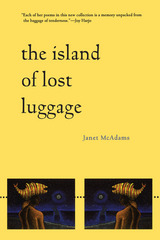 The Island of Lost Luggage
Janet McAdams
University of Arizona Press, 2000 " . . . at the Island of Lost Luggage, they line up:
the disappeared, the lost children, the Earharts
of modern life. It's your bad luck to die in the cold
wars of certain nations. But in the line at Unclaimed
Baggage, no one mourns for the sorry world
that sent them here . . ." The abused. The oppressed. The terrified victims of institutionalized insanity. Making daring connections between the personal and the political, Janet McAdams draws new lines in the conflict between the new and old worlds as she redefines the struggle to remain human. This award-winning collection of poetry forges surprising links among seemingly unrelated forms of violence and resistance in today's world: war in Central America, abuses against Nature, the battleground of the bedroom. McAdams evokes the absurdity of everyday existence as she sends out a new call for social responsibility. The Island of Lost Luggage is the poetry winner of the 1999 First Book Awards competition of the Native Writers' Circle of the Americas.
 Island on Fire: The Revolt That Ended Slavery in the British Empire
Tom Zoellner
Harvard University Press, 2020 Winner of the National Book Critics Circle Award
“Impeccably researched and seductively readable…tells the story of Sam Sharpe’s revolution manqué, and the subsequent abolition of slavery in Jamaica, in a way that’s acutely relevant to the racial unrest of our own time.” —Madison Smartt Bell, author of All Souls’ Rising
The final uprising of enslaved people in Jamaica started as a peaceful labor strike a few days shy of Christmas in 1831. A harsh crackdown by white militias quickly sparked a full-blown revolt, leaving hundreds of plantation houses in smoking ruins. The rebels lost their daring bid for freedom, but their headline-grabbing defiance triggered a decisive turn against slavery.
Island on Fire is a dramatic day-by-day account of these transformative events. A skillful storyteller, Tom Zoellner uses diaries, letters, and colonial records to tell the intimate story of the men and women who rose up and briefly tasted liberty. He brings to life the rebellion’s enigmatic leader, the preacher Samuel Sharpe, and shows how his fiery resistance turned the tide of opinion in London and hastened the end of slavery in the British Empire.
“Zoellner’s vigorous, fast-paced account brings to life a varied gallery of participants…The revolt failed to improve conditions for the enslaved in Jamaica, but it crucially wounded the institution of slavery itself.” —Fergus M. Bordewich, Wall Street Journal
“It’s high time that we had a book like the splendid one Tom Zoellner has written: a highly readable but carefully documented account of the greatest of all British slave rebellions, the miseries that led to it, and the momentous changes it wrought.” —Adam Hochschild, author of Bury the Chains
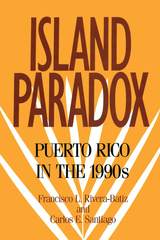 Island Paradox: Puerto Rico in the 1990s
Francisco Rivera-Batiz
Russell Sage Foundation, 1996 "One of the year's best books on Puerto Rico."—El Nuevo Dia, San Juan "[The authors] are highly regarded labor economists who have written extensively and intelligently in the past, and again in this volume, on Puerto Rican migration and labor markets... There isabundant statistical data and careful analysis, some of which challenges the conventional wisdom. Highly recommended." —Choice Island Paradox is the first comprehensive, census-based portrait of social and economic life in Puerto Rico. During its nearly fiftyyears as a U.S. commonwealth, the relationship between Puerto Rico's small, developing economy and the vastly larger, more industrialized United States has triggered profound changes in the island's industry and labor force. Puerto Rico has been deeply affected by the constant flow of its people to and from the mainland, and by the influx of immigrant workers from other nations. Distinguished economists Francisco Rivera-Batiz and Carlos Santiago provide the latest data on the socioeconomic status of Puerto Rico today, and examine current conditions within the context of the major trends of the past two decades. Island Paradox describes many improvements in Puerto Rico's standard of living, including rising per-capita income, longer life expectancies, greater educational attainment, and increased job prospects for women. But it also discusses the devastating surge in unemployment. Rapid urbanization and a vanishing agricultural sector have led to severe inequality, as family income has become increasingly dependent on education and geographic location. Although Puerto Rico's close ties to the United States were the major source of the island's economic growth prior to 1970, they have also been at the root of recent hardships. Puerto Rico's trade andbusiness transactions remain predominantly with the United States, but changes in federal tax, social, and budgetary policies, along with international agreements such as NAFTA, now threaten to alter the economic ties between the island and the mainland. Island Paradox reveals the social and family changes that have occurred among Puerto Ricans on the island and the mainland. The significant decline in the island's population growth is traced in part to women's increased pursuit of educational and employment opportunities before marrying. More children are being raised by singleparents, but this stems from a higher divorce rate and not a rise in teenage pregnancy. The widespread circular migration to and from the United States has had strong repercussions for the island's labor markets and social balance, leading to concerns about an island brain drain. The Puerto Rican population in the United States hasbecome increasingly diverse, less regionally concentrated and not, as some have claimed, in danger of becoming an underclass. Within a single generation Puerto Rico has experienced social and economic shifts of an unprecedented magnitude. Island Paradox charts Puerto Rico's economic fortunes, summarizes the major demographic trends, and identifies the issues that will have the strongest bearings on Puerto Rico's prospects for a successful future. A Volume in the Russell Sage Foundation Census Series
Island Possessed
Katherine Dunham
University of Chicago Press, 1994 Just as surely as Haiti is "possessed" by the gods and spirits of vaudun (voodoo), the island "possessed" Katherine Dunham when she first went there in 1936 to study dance and ritual. In this book, Dunham reveals how her anthropological research, her work in dance, and her fascination for the people and cults of Haiti worked their spell, catapulting her into experiences that she was often lucky to survive. Here Dunham tells how the island came to be possessed by the demons of voodoo and other cults imported from various parts of Africa, as well as by the deep class divisions, particularly between blacks and mulattos, and the political hatred still very much in evidence today. Full of the flare and suspense of immersion in a strange and enchanting culture, Island Possessed is also a pioneering work in the anthropology of dance and a fascinating document on Haitian politics and voodoo.
 Island Time: Speed and the Archipelago from St. Kitts and Nevis
Jessica Swanston Baker
University of Chicago Press, 2024 A close look at how wylers, a popular musical style from the island of St. Kitts and Nevis, expresses a unique mode of relation in the postcolonial Caribbean.
In Island Time, ethnomusicologist Jessica Swanston Baker examines wylers, a musical form from St. Kitts and Nevis that is characterized by speed. Baker argues that this speed becomes a useful and highly subjective metric for measuring the relationship between Caribbean aspirations and the promises of economic modernity; women’s bodily autonomy and the nationalist fantasies that would seek to curb that autonomy; and the material realities of Kittitian-Nevisian youth living in the disillusionment following postcolonial independence. She traces the wider Caribbean musical, cultural, and media-based resonances of wylers, posing an alternative model to scholarship on Caribbean music that has tended to privilege the big islands—Trinidad, Jamaica, and Haiti—thus neglecting not only the unique cultural worlds of smaller nations but also the unbounded nature of musical exchange in the region. The archipelago emerges as a useful model for apprehending the relationality across scales that governs the temporal and spatial logics that undergird Caribbean performance. The archipelago and its speeds ultimately emerge as a meaningful medium for postcolonial, postmodern world-making.
 The Island: War and Belonging in Auden’s England
Nicholas Jenkins
Harvard University Press, 2024 A Times Literary Supplement Best Book of the Year
A Spectator Book of the Year
A groundbreaking reassessment of W. H. Auden’s early life and poetry, shedding new light on his artistic development as well as on his shifting beliefs about political belonging in interwar England.
W. H. Auden’s early works, from his first poems in 1922 to the publication of his landmark collection On This Island in the mid-1930s, are prized for their psychological depth. Yet Nicholas Jenkins argues that they are political poems as well, illuminating Auden’s intuitions about a key aspect of modern experience: national identity.
The Island presents a new picture of Auden as he explored a genteel, lyrical nationalism in response to World War I. Amid artists’ and intellectuals’ “rediscovery” of England’s rural landscapes, Auden’s poems reflect on a world in ruins while cultivating visions of a beautiful—if morally compromised—English isle. They also speak to aspects of Auden’s personal search for belonging, including his negotiation of the codes that structured gay life.
As Europe veered toward a second immolation, Auden began to realize that poetic myths centered on English identity held little potential. Reexamining one of the twentieth century’s most moving and controversial poets, The Island is a fresh account of Auden’s early works and a striking parable about the politics of modernism.
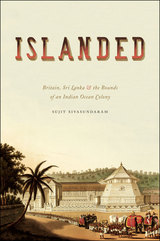 Islanded: Britain, Sri Lanka, and the Bounds of an Indian Ocean Colony
Sujit Sivasundaram
University of Chicago Press, 2013 A groundbreaking retelling of the advent of British rule in Sri Lanka.
How did the modern nation of Sri Lanka come to be? In search of an answer to this question, Islanded returns us to the late eighteenth and early nineteenth centuries and to the advance of the British on the kingdom of Kandy. This advance saw the fall of the last foothold of kingly rule, centered in the highlands of the island. The British undertook a process of “islanding” and “partitioning,” which cast the island, its nature and geography, its religious and ethnic character, and its historical traditions and maritime culture as separate from British domains in mainland India and elsewhere.
Kings had seen themselves as rightful rulers of the whole territory of the island. Now, this right was violently extended by British colonists through the application of a model of crown rule and modern bureaucracy that tied ethnicity to language and religion, employing essentialized but not fully realized patterns that would continue to trouble the modern nation. Picking up a range of unusual themes, from migration, orientalism, and ethnography to botany, medicine, and education, Islanded is a groundbreaking text in Sri Lankan history writing, shaping discussions of the imperial transition in South Asia.
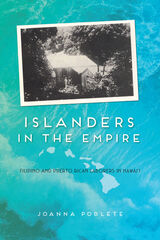 Islanders in the Empire: Filipino and Puerto Rican Laborers in Hawai'i
JoAnna Poblete
University of Illinois Press, 2014 In the early 1900s, workers from new U.S. colonies in the Philippines and Puerto Rico held unusual legal status. Denied citizenship, they nonetheless had the right to move freely in and out of U.S. jurisdiction. As a result, Filipinos and Puerto Ricans could seek jobs in the United States and its territories despite the anti-immigration policies in place at the time.
JoAnna Poblete's Islanders in the Empire: Filipino and Puerto Rican Laborers in Hawai'i takes an in-depth look at how the two groups fared in a third new colony, Hawai'i. Using plantation documents, missionary records, government documents, and oral histories, Poblete analyzes how the workers interacted with Hawaiian government structures and businesses, how U.S. policies for colonial workers differed from those for citizens or foreigners, and how policies aided corporate and imperial interests.
A rare tandem study of two groups at work on foreign soil, Islanders in the Empire offers a new perspective on American imperialism and labor issues of the era.
 Islands and Empires: Western Impact on the Pacific and East Asia
Ernest S. Dodge
University of Minnesota Press, 1978
Islands and Empires was first published in 1976. Minnesota Archive Editions uses digital technology to make long-unavailable books once again accessible, and are published unaltered from the original University of Minnesota Press editions.
This is the first one-volume account of the massive impact of Western civilization on the Pacific Islands and the Far East, principally China and Japan. The effects on the two areas were very different since, in the case of the islands, contact was with peoples who were still in the Stone Age, while in the Far East Westerners came up against sophisticated civilizations more ancient and mature than their own. Because of these differences, the book is divided into two sections, the first dealing with the Pacific Islands and the second with the East Asian mainland. Reverse influences—those of the Eastern cultures on the West—are also discussed.
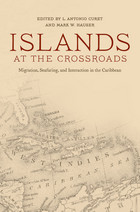 Islands at the Crossroads: Migration, Seafaring, and Interaction in the Caribbean
L. Antonio Curet
University of Alabama Press, 2011 A long sequence of social, cultural, and political processes characterizes an ever-dynamic Caribbean history. The Caribbean Basin is home to numerous linguistic and cultural traditions and fluid interactions that often map imperfectly onto former colonial and national traditions. Although much of this contact occurred within the confines of local cultural communities, regions, or islands, they nevertheless also include exchanges between islands, and in some cases, with the surrounding continents. recent research in the pragmatics of seafaring and trade suggests that in many cases long-distance intercultural interactions are crucial elements in shaping the social and cultural dynamics of the local populations. The contributors to Islands at the Crossroads include scholars from the Caribbean, the United States, and Europe who look beyond cultural boundaries and colonial frontiers to explore the complex and layered ways in which both distant and more intimate sociocultural, political, and economic interactions have shaped Caribbean societies from seven thousand years ago to recent times. Contributors Douglas V. Armstrong / Mary Jane Berman / Arie Boomert / Alistair J. Bright / Richard T. Callaghan / L. Antonio Curet / Mark W. Hauser / Corinne L. Hofman / Menno L. P. Hoogland / Kenneth G. Kelly / Sebastiaan Knippenberg / Ingrid Newquist / Isabel C. Rivera-Collazo / Reniel Rodríquez Ramos / Alice V. M. Samson / Peter E. Siegel / Christian Williamson
Islands at the Edge of Time: A Journey To America's Barrier Islands
Gunnar Hansen
Island Press, 1993 Islands at the Edge of Time is the story of one man's captivating journey along America's barrier islands from Boca Chica, Texas, to the Outer Banks of North Carolina. Weaving in and out along the coastlines of Texas, Louisiana, Mississippi, Alabama, South Carolina, and North Carolina, poet and naturalist Gunnar Hansen perceives barrier islands not as sand but as expressions in time of the processes that make them. Along the way he treats the reader to absorbing accounts of those who call these islands home -- their lives often lived in isolation and at the extreme edges of existence -- and examines how the culture and history of these people are shaped by the physical character of their surroundings.
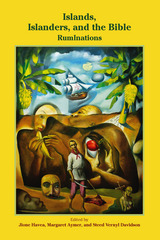 Islands, Islanders, and the Bible: RumInations
Jione Havea
SBL Press, 2015 Explore theories, readings and interpretations from island perspectives In this collection the authors focus on contextual, cultural, and postcolonial criticisms. This work seeks to move beyond simply reacting to, rejecting, or recasting biblical interpretations that misunderstand or mischaracterize island space. Instead it serves as an entry point to thinking biblically through the island. The contributors are Margaret Aymer, Randall C. Bailey, Roland Boer, Steed Vernyl Davidson, Jione Havea, Hisako Kinukawa, Grant Macaskill, Mosese Ma'ilo, J. Richard Middleton, Althea Spencer Miller, Aliou C. Niang, Andrew Mein, Daniel Smith-Christopher, Nasili Vaka'uta, and Elaine M. Wainwright. Features: - Sixteen essays by islanders rooted in Asia, America, the Caribbean, Europe, and Oceania
- Essays that invite a conversation on how being islanders and islandedness condition the way islanders read biblical texts
- Three sections of articles, two of which engage the first
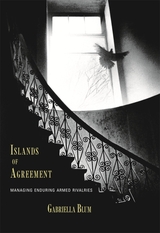 Islands of Agreement: Managing Enduring Armed Rivalries
Gabriella Blum
Harvard University Press, 2007 We are culturally conditioned to think of war and peace in binary terms of strict opposition. Correspondingly, we tend to focus our attention on conflict prevention or conflict resolution. But as Islands of Agreement demonstrates, peace and war are seldom polar totalities but increasingly can and do coexist within the confines of a single scenario.
Consequently, Gabriella Blum suggests that even where conflict exists, we regard it as only one dimension of an ongoing, multifaceted interstate relationship. The result is a shift in perspective away from the constricting notions of "prevention" or "resolution" toward a more holistic approach of relationship management.
This approach is especially pertinent because conflicts cannot always be prevented or resolved. Through case studies of long-enduring rivalries--India and Pakistan, Greece and Turkey, Israel and Lebanon--Blum shows how international law and politics can function in the battlefield and in everyday life, forming a hybrid international relationship.
Through a strategy she calls "islands of agreement," Blum argues that within the most entrenched and bitter struggles, adversaries can carve out limited areas that remain safe or even prosperous amid a tide of war. These havens effectively reduce suffering and loss and allow mutually beneficial exchanges to take place, offering hope for broader accords.
 Islands of Eight Million Smiles: Idol Performance and Symbolic Production in Contemporary Japan
Hiroshi Aoyagi
Harvard University Press, 2005 Since the late 1960s a ubiquitous feature of popular culture in Japan has been the "idol," an attractive young actor, male or female, packaged and promoted as an adolescent role model and exploited by the entertainment, fashion, cosmetic, and publishing industries to market trendy products. This book offers ethnographic case studies regarding the symbolic qualities of idols and how these qualities relate to the conceptualization of selfhood among adolescents in Japan and elsewhere in East Asia. The author explores how the idol-manufacturing industry absorbs young people into its system of production, molds them into marketable personalities, commercializes their images, and contributes to the construction of ideal images of the adolescent self.
Since the relationship between the idols and their consumers is dynamic, the study focuses on the fans of idols as well. Ultimately, Aoyagi argues, idol performances substantiate capitalist values in the urban consumer society of contemporary Japan and East Asia. Regardless of how crude their performances may appear in the eyes of critics, the idols have helped establish the entertainment industry as an agent of public socialization by driving public desires toward the consumption of commoditized fantasies.
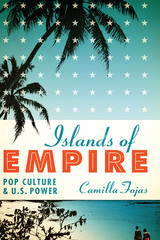 Islands of Empire: Pop Culture and U.S. Power
By Camilla Fojas
University of Texas Press, 2014 Camilla Fojas explores a broad range of popular culture media—film, television, journalism, advertisements, travel writing, and literature—with an eye toward how the United States as an empire imagined its own military and economic projects. Impressive in its scope, Islands of Empire looks to Cuba, Guam, Hawai‘i, Puerto Rico, and the Philippines, asking how popular narratives about these island outposts expressed the attitudes of the continent throughout the twentieth century. Through deep textual readings of Bataan, Victory at Sea, They Were Expendable, and Back to Bataan (Philippines); No Man Is an Island and Max Havoc: Curse of the Dragon (Guam); Cuba, Havana, and Dirty Dancing: Havana Nights (Cuba); Blue Hawaii, Gidget Goes Hawaiian, and Paradise, Hawaiian Style (Hawai‘i); and West Side Story, Fame, and El Cantante (Puerto Rico), Fojas demonstrates how popular texts are inseparable from U.S. imperialist ideology. Drawing on an impressive array of archival evidence to provide historical context, Islands of Empire reveals the role of popular culture in creating and maintaining U.S. imperialism. Fojas’s textual readings deftly move from location to location, exploring each island’s relationship to the United States and its complementary role in popular culture. Tracing each outpost’s varied and even contradictory political status, Fojas demonstrates that these works of popular culture mirror each location’s shifting alignment to the U.S. empire, from coveted object to possession to enemy state.
Islands of History
Marshall Sahlins
University of Chicago Press, 1985 Marshall Sahlins centers these essays on islands—Hawaii, Fiji, New Zealand—whose histories have intersected with European history. But he is also concerned with the insular thinking in Western scholarship that creates false dichotomies between past and present, between structure and event, between the individual and society. Sahlins's provocative reflections form a powerful critique of Western history and anthropology.
 Islands of Love, Islands of Risk: Culture and HIV in the Trobriands
Katherine Lepani
Vanderbilt University Press, 2012 The Trobriand Islands of Papua New Guinea have been depicted as a place of sexual freedom ever since these small atolls in the southwest Pacific were made famous by anthropologist Bronislaw Malinowski in the early twentieth century. Today in the era of the HIV/AIDS pandemic, how do Trobrianders respond to public health interventions that link their cultural practices to the risk of HIV? How do they weigh HIV prevention messages of abstinence, fidelity, and condom use against traditional sexual practices that strengthen interclan relationships in a gift economy?
Written by an anthropologist who has direct ties to the Trobriands through marriage and who has been involved in Papua New Guinea's national response to the HIV epidemic since the mid-1990s, Islands of Love, Islands of Risk is an unusual insider ethnography. Katherine Lepani describes in vivid detail the cultural practices of regeneration, from the traditional dance called Wosimwaya to the elaborate exchanges that are part of the mortuary feasts called sagali. Focusing on the sexual freedom of young people, the author reveals the social value of sexual practice. By bringing cultural context and lived experience to the fore, the book addresses the failure of standardized public health programs to bridge the persistent gap between HIV awareness and prevention. The book offers insights on the interplay between global and local understandings of gender, sexuality, and disease and suggests the possibility of viewing sexuality in terms other than risk.
Islands of Love, Islands of Risk illustrates the contribution of ethnographic research methodology in facilitating dialogue between different ways of knowing. As a contemporary perspective on Malinowski's classic accounts of Trobriand sexuality, the book reaffirms the Trobriands' central place in the study of anthropology.
This book is the recipient of the annual Norman L. and Roselea J. Goldberg Prize for the best project in the area of medicine.
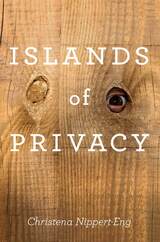 Islands of Privacy
Christena E. Nippert-Eng
University of Chicago Press, 2010 Everyone worries about privacy these days. As corporations and governments devise increasingly sophisticated data gathering tools and joining Facebook verges on obligatory, concerns over the use and abuse of personal information are undeniable. But the way privacy functions on the virtual frontier of the Internet is only a subset of the fascinating ways we work to achieve it throughout our everyday lives. In Islands of Privacy, Christena Nippert-Eng pries open the blinds, giving us an intimate view into the full range of ordinary people’s sometimes extraordinary efforts to preserve the border between themselves and the rest of the world.
Packed with stories that are funny and sad, familiar and strange, Islands of Privacy tours the myriad arenas where privacy battles are fought, lost, and won. Nippert-Eng explores how we manage our secrets, our phone calls and e-mail, the perimeters of our homes, and our interactions with neighbors. She discovers that everybody practices the art of selectively concealing and disclosing information on a daily basis. This important balancing act governs a wide range of behaviors, from deciding whether to give our bosses our cell phone numbers to choosing what we carry in our wallets or purses. Violations of privacy and anxiety about how we grant it to each other also come under Nippert-Eng’s microscope as she crafts a compelling argument that successfully managing privacy is critical for successfully maintaining our relationships with each other and our selves.
Roaming from the beach to the bank and from the bathroom to the bus, Nippert-Eng’s keenly observed and vividly told book gives us the skinny on how we defend our shrinking islands of privacy in the vast ocean of accessibility that surrounds us.
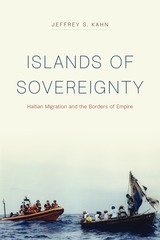 Islands of Sovereignty: Haitian Migration and the Borders of Empire
Jeffrey S. Kahn
University of Chicago Press, 2018 In Islands of Sovereignty, anthropologist and legal scholar Jeffrey S. Kahn offers a new interpretation of the transformation of US borders during the late twentieth century and its implications for our understanding of the nation-state as a legal and political form. Kahn takes us on a voyage into the immigration tribunals of South Florida, the Coast Guard vessels patrolling the northern Caribbean, and the camps of Guantánamo Bay—once the world’s largest US-operated migrant detention facility—to explore how litigation concerning the fate of Haitian asylum seekers gave birth to a novel paradigm of offshore oceanic migration policing. Combining ethnography—in Haiti, at Guantánamo, and alongside US migration patrols in the Caribbean—with in-depth archival research, Kahn expounds a nuanced theory of liberal empire’s dynamic tensions and its racialized geographies of securitization. An innovative historical anthropology of the modern legal imagination, Islands of Sovereignty forces us to reconsider the significance of the rise of the current US immigration border and its relation to broader shifts in the legal infrastructure of contemporary nation-states across the globe.
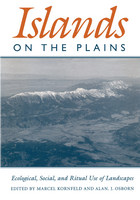 Islands On The Plains: Ecological, Social, and Ritual Use of Landscapes
Edited by Marcel Kornfeld and Alan J. Osborn
University of Utah Press, 2003 Scattered throughout the Great Plains are many isolated areas of varying size and ecology, quite distinct from the surrounding grasslands. Such spaces can be uplands like the Black Hills, low hills like the Nebraska Sand Hills, or linear areas such as shallow river valleys and deeply incised canyons. While the notion of “islands” is not a new one among ecologists, its application in Plains archaeology is. The contributors to this volume seek to illustrate the different ways that the spatial, structural, and temporal nature of islands conditioned the behavior and adaptation of past Plains peoples. This as a first step toward a more detailed analysis of habitat variation and its effects on Plains cultural dynamics and evolution. Although the emphasis is on ecology, several chapters also address social and ideological islands in the form of sacred sites and special hunting grounds.
 The Islands: Six Fictions
William Wall
University of Pittsburgh Press, 2017 WINNER OF THE 2017 DRUE HEINZ LITERATURE PRIZE
Selected by David Gates
William Wall is the first international winner of the Drue Heinz Literature Prize.
“Suddenly I see weeks that are like years stretch out before me. Islands are, more than anything else, places of deprivation.”
Jeannie, one of the sisters featured in The Islands, comes to this realization at the age of six or seven, as her father leaves their island home yet again to work on his latest book.
In this collection of interconnected stories, the beautiful and ravaging forces of sea and land collide with the forces of human nature, through isolation and family, love and loss, madness and revelation. The stories follow the lives of two sisters and the people who come and go in their lives, much like the tides. Dominated by the tragic loss of a third sister at a young age, their family spirals out of control. We witness three stages of the sisters’ lives, each taking place on an island—in southwest Ireland, southern England, and the Bay of Naples. Beautifully and sparsely written, the stories deeply evoke landscape and character, and are suffused with a keen eye for detail and metaphor.
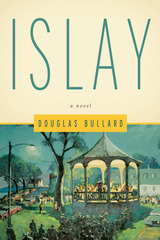 Islay: A Novel
Douglas Bullard
Gallaudet University Press, 2013 Now, a new edition of the classic novel Islay promises to entertain a contemporary audience with its Deaf American dream first conceived by Douglas Bullard in 1986. Islay is the name of an imaginary island state coveted by Lyson Sulla, a Deaf man who is tired of feeling that “hearing think deaf means dumb, pat head.” Sulla signs this to his wife Mary in explanation of his desire to tum Islay into a state solely for Deaf people, with himself as governor. From there, his peripatetic quest begins.
Sulla initiates his plan by driving to Islay to survey the lay of the land. There, he meets Gene Owls, another Deaf man who also has designs on the island. Sulla then embarks on travels around the nation recruiting Deaf people to join his crusade. Along the way, he meets a Deaf doctor, a bowling alley owner, a family of peddlers, a Deaf minister, and a willing businessman. Far from a heroic character, Sulla engages in each encounter in an earthy, self-sewing fashion that sends up all parties involved, hearing and Deaf.
Islay uniquely blends classic English forms of satire with the direct, down-to-earth expression of American Sign Language ingenuously rendered throughout. Deaf himself, Bullard has created a wonderfully amusing story that features Deaf people seeking their American dream in a manner both serious and joyous at the same time.
|
|
